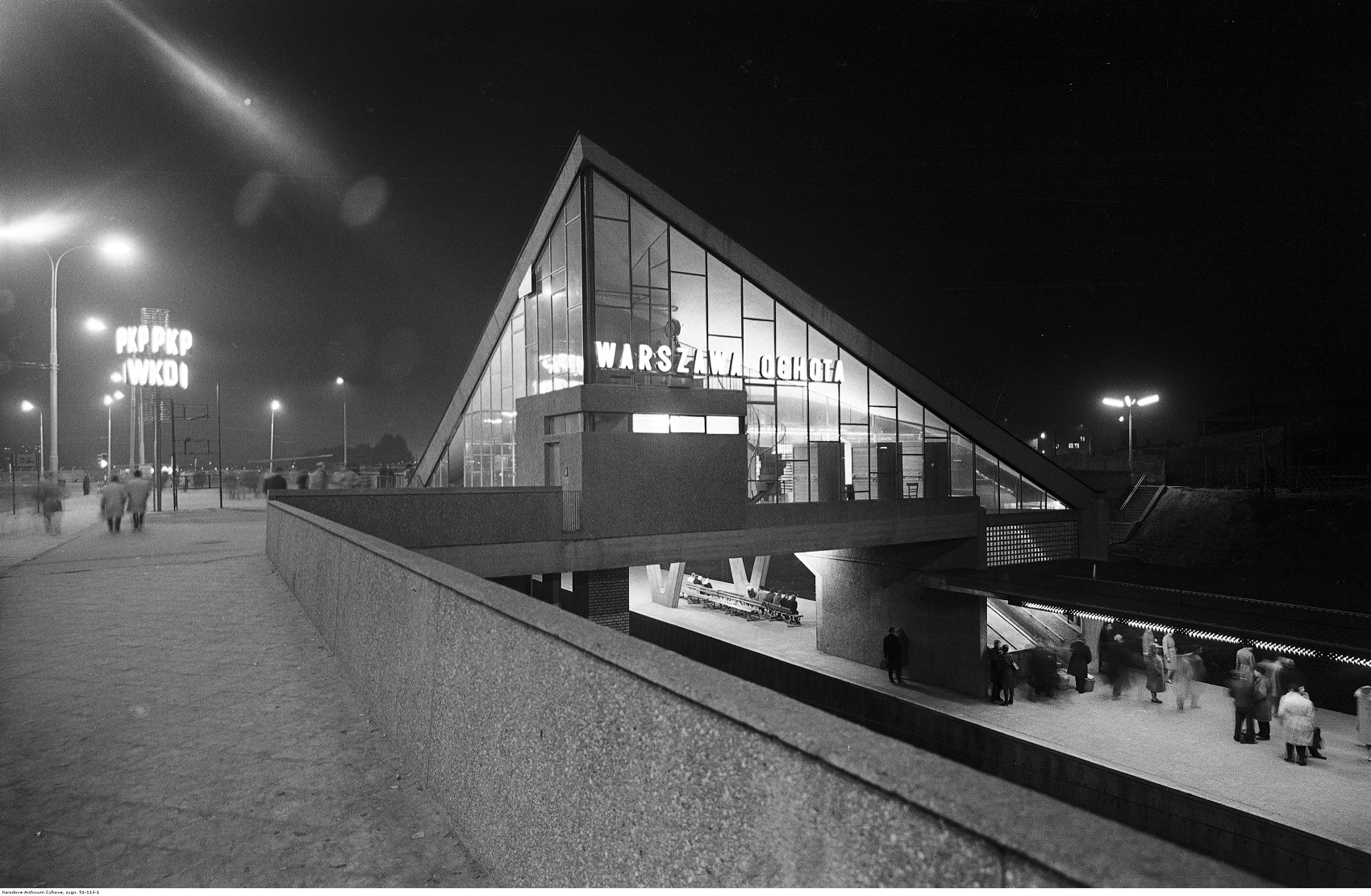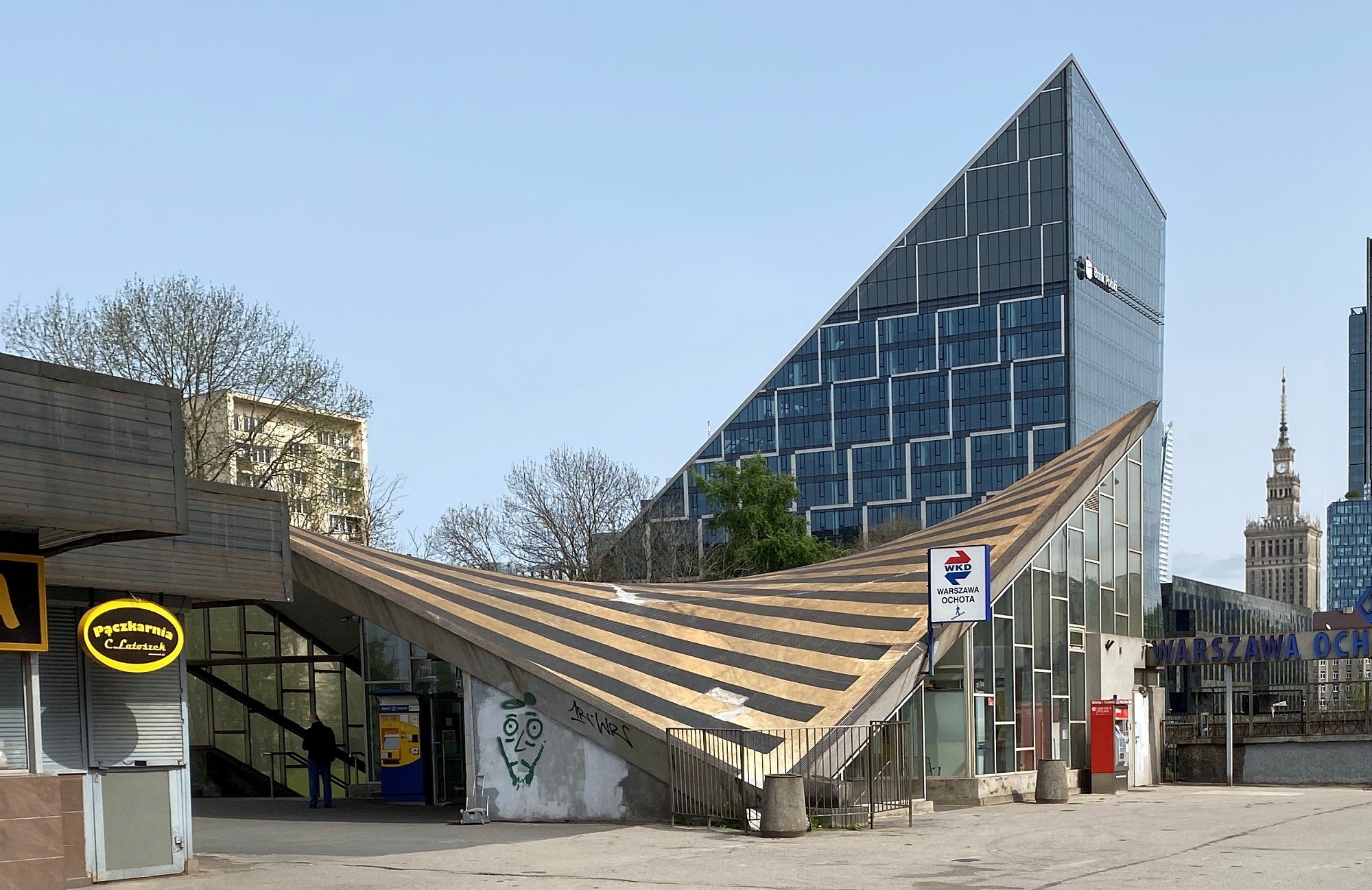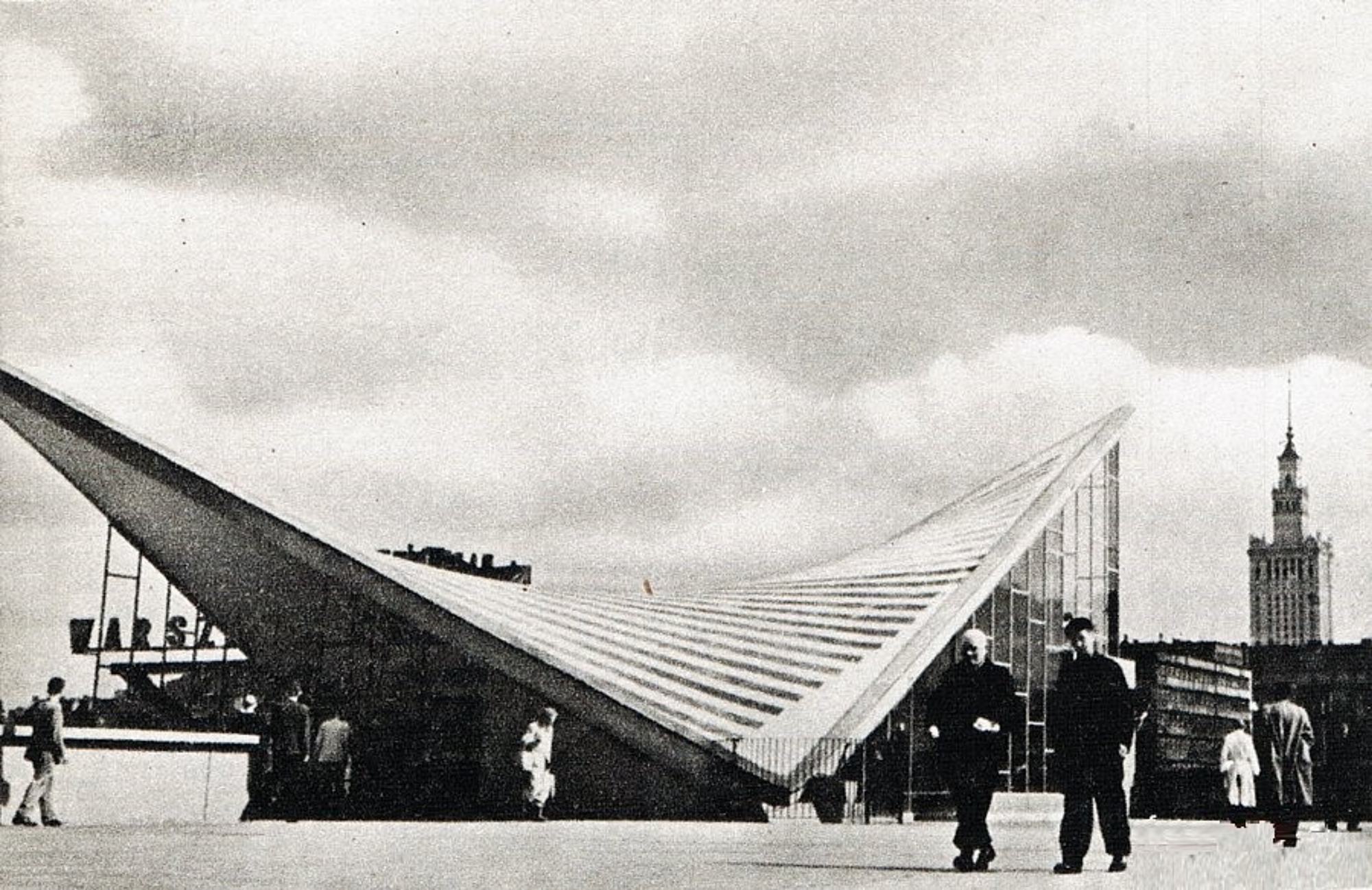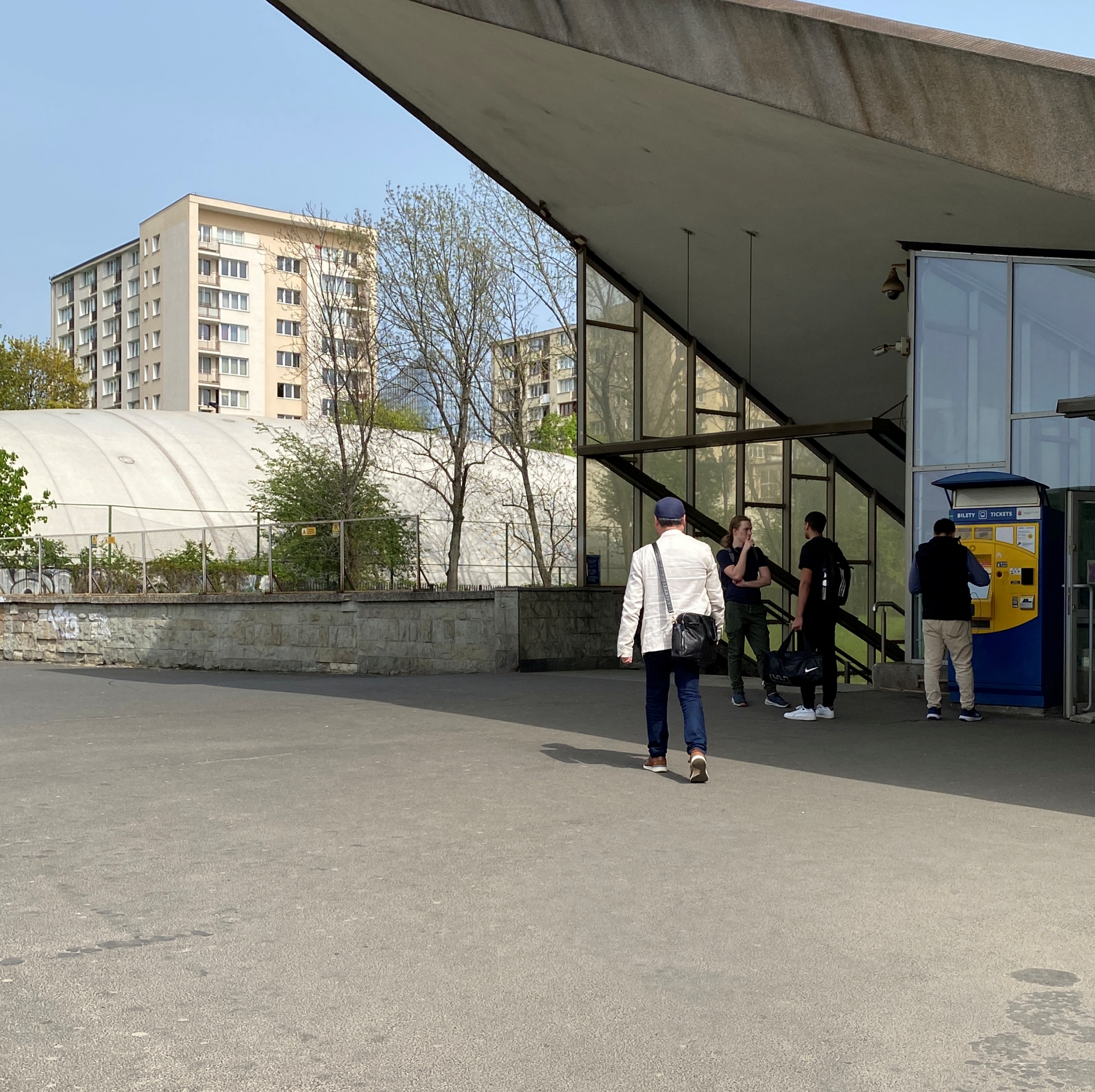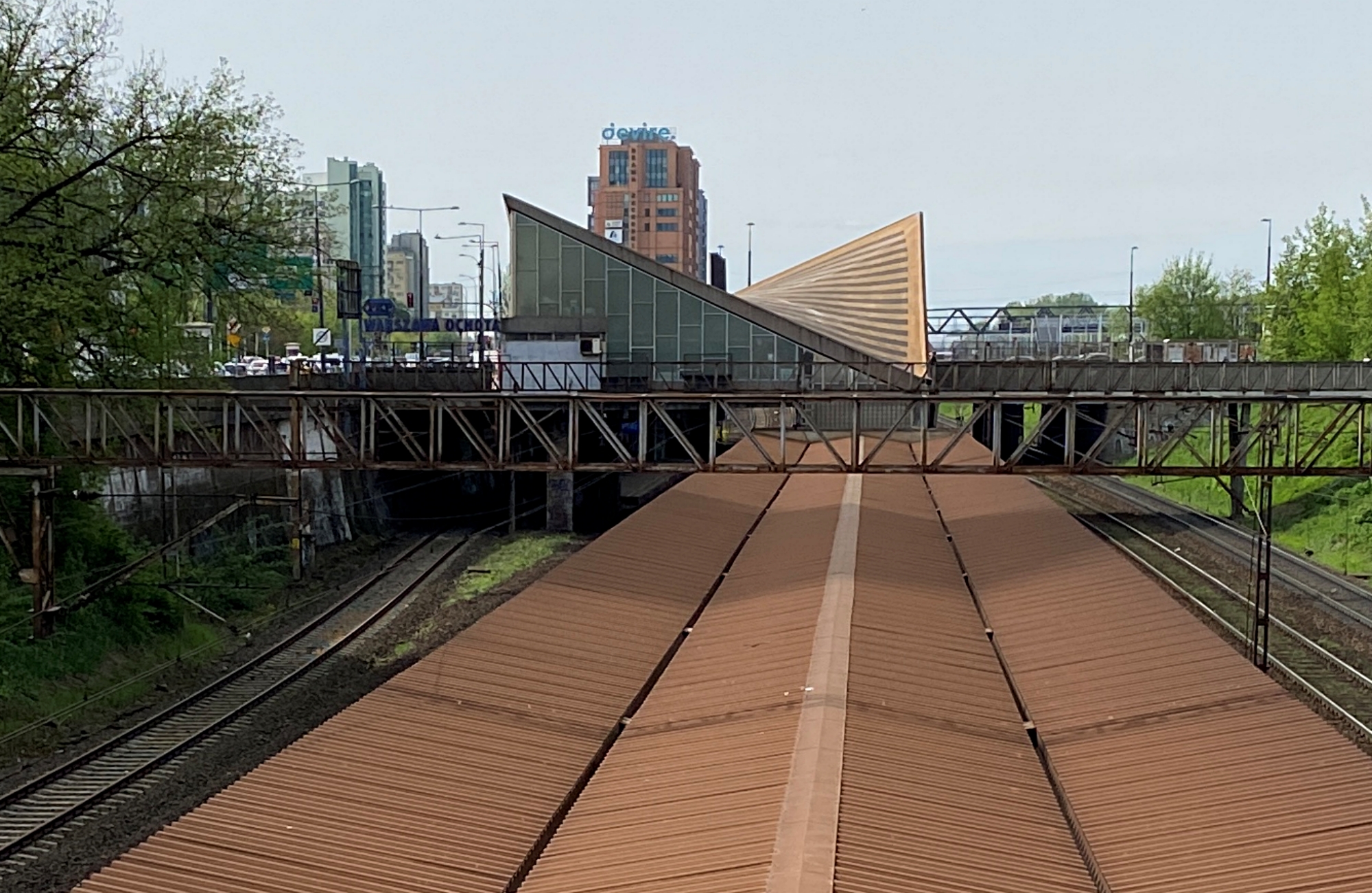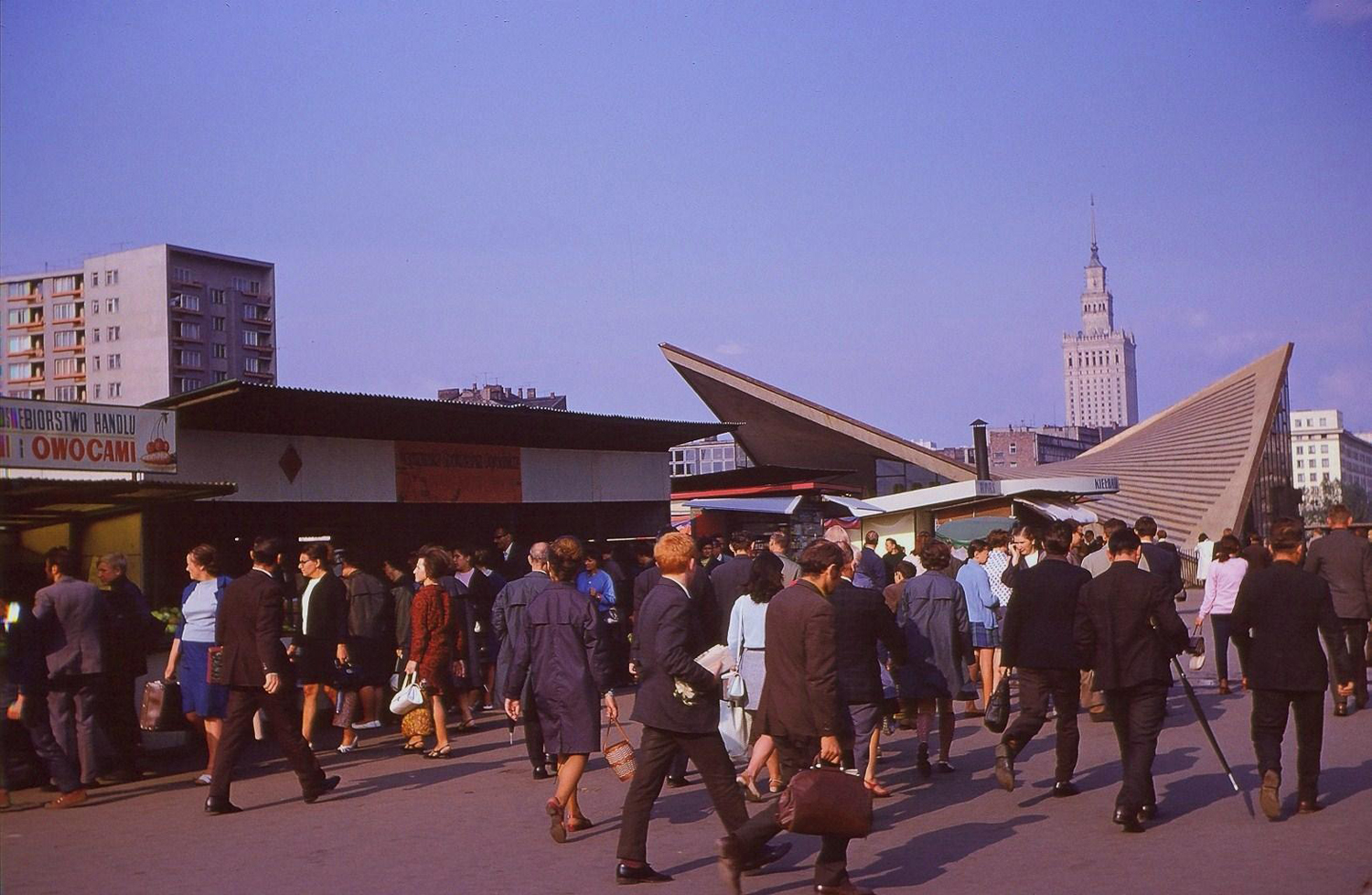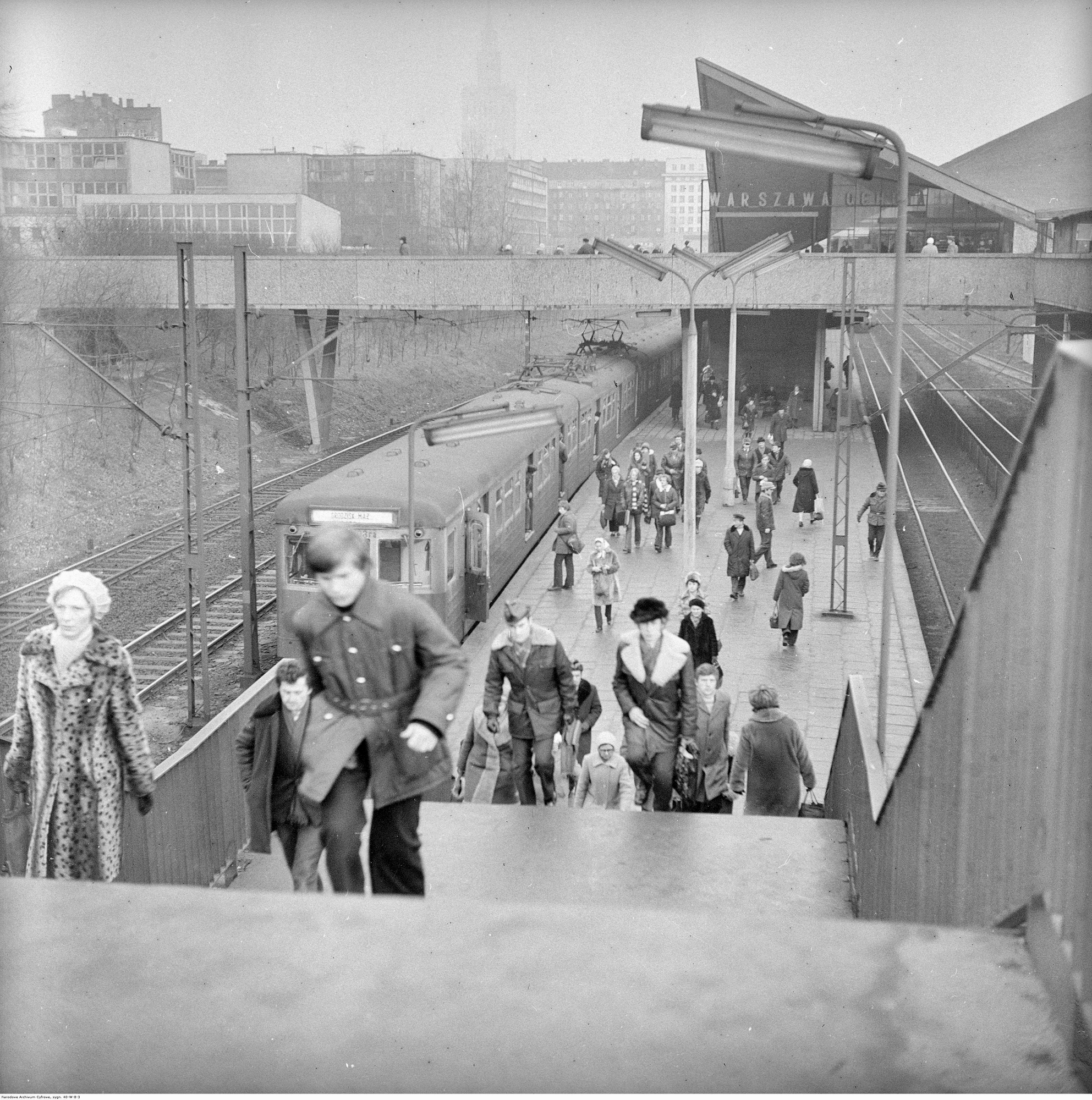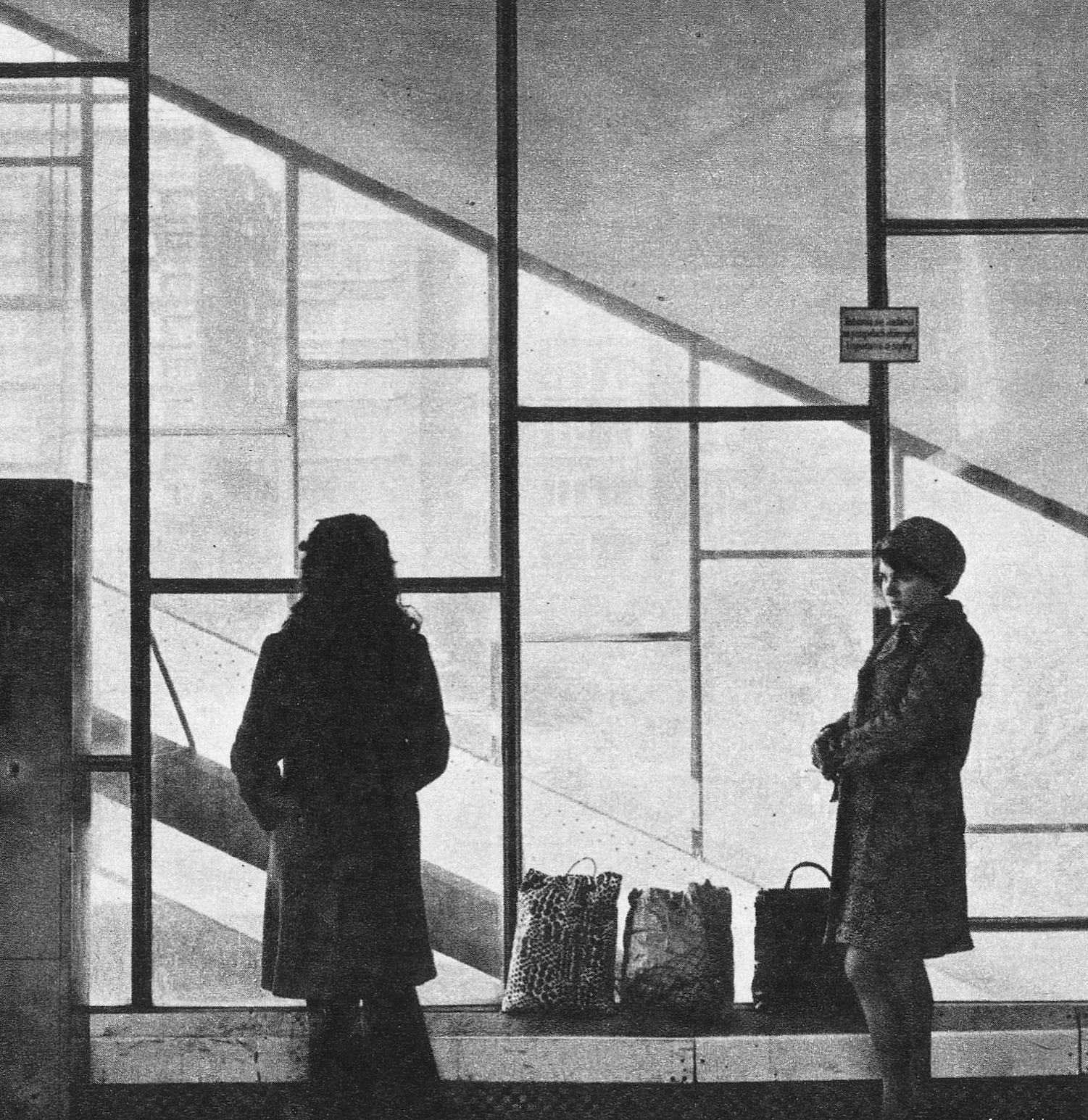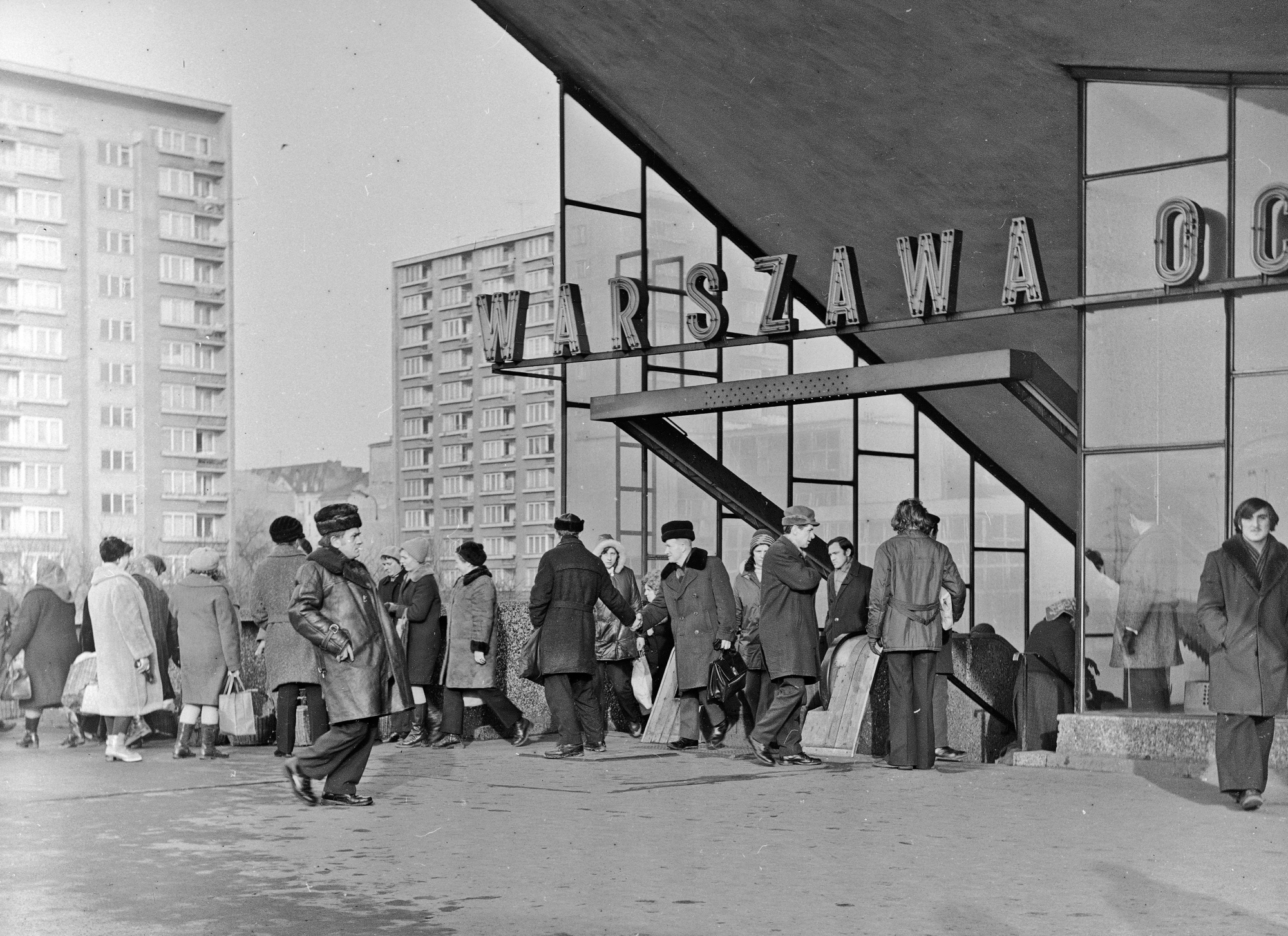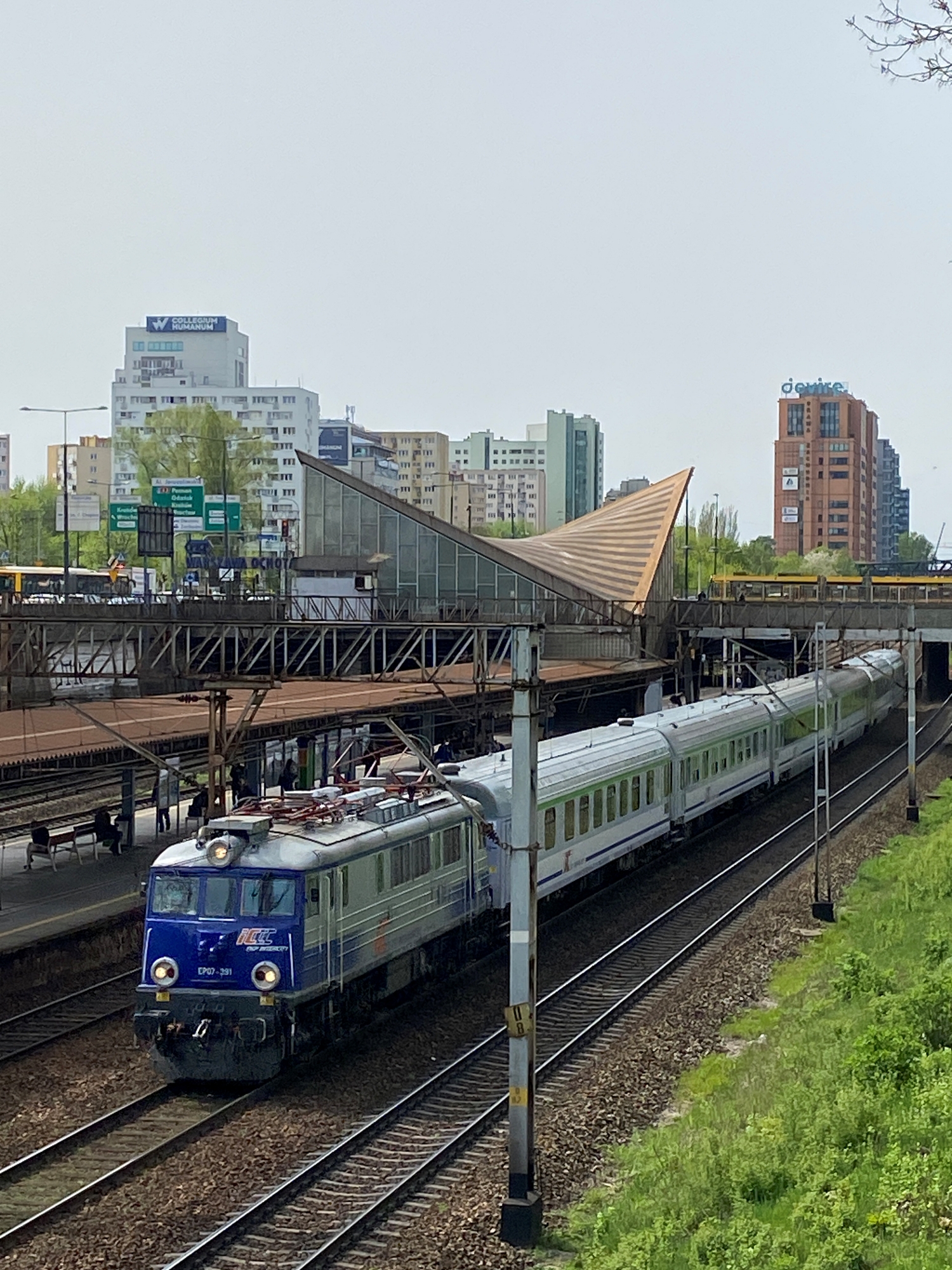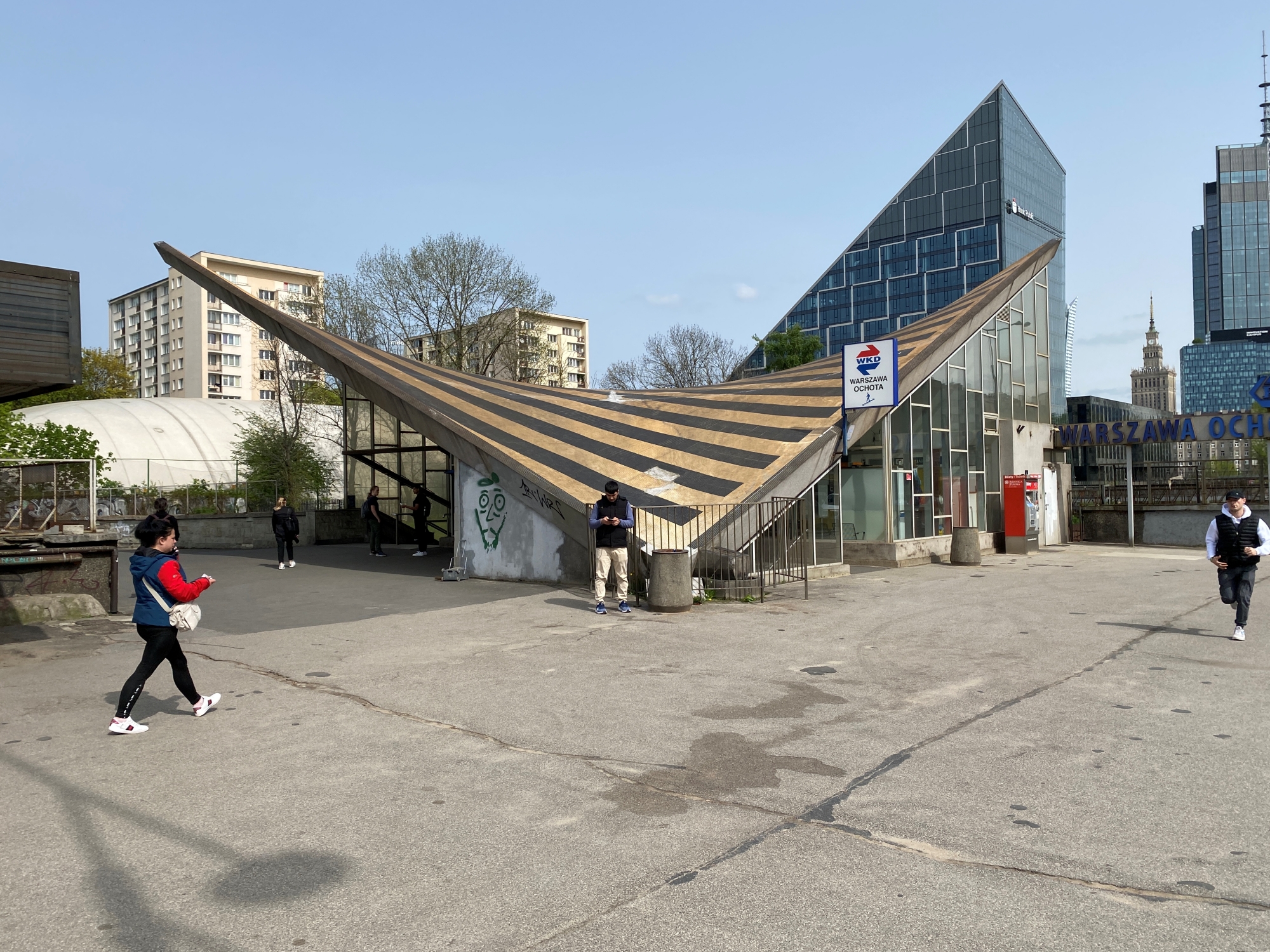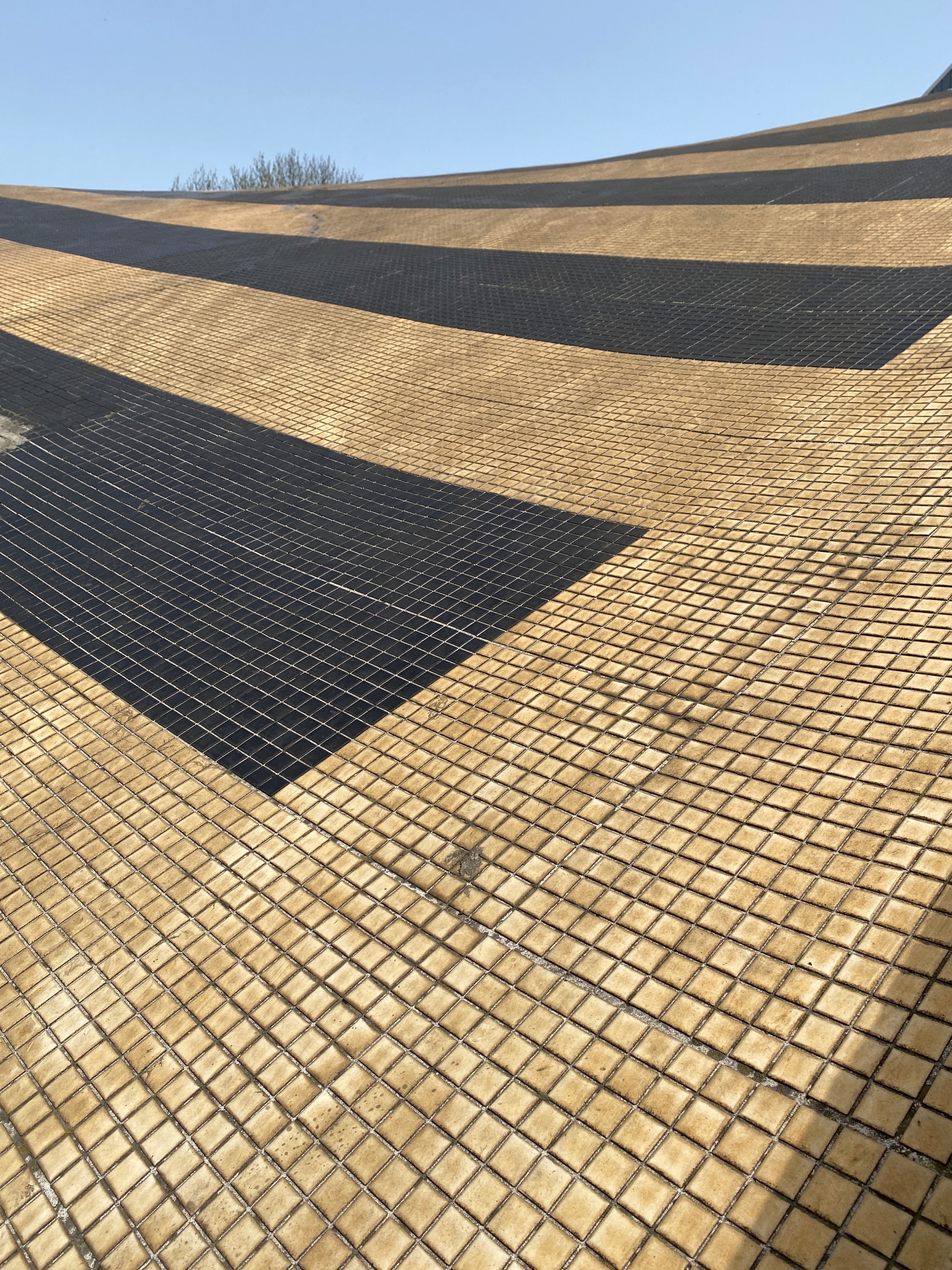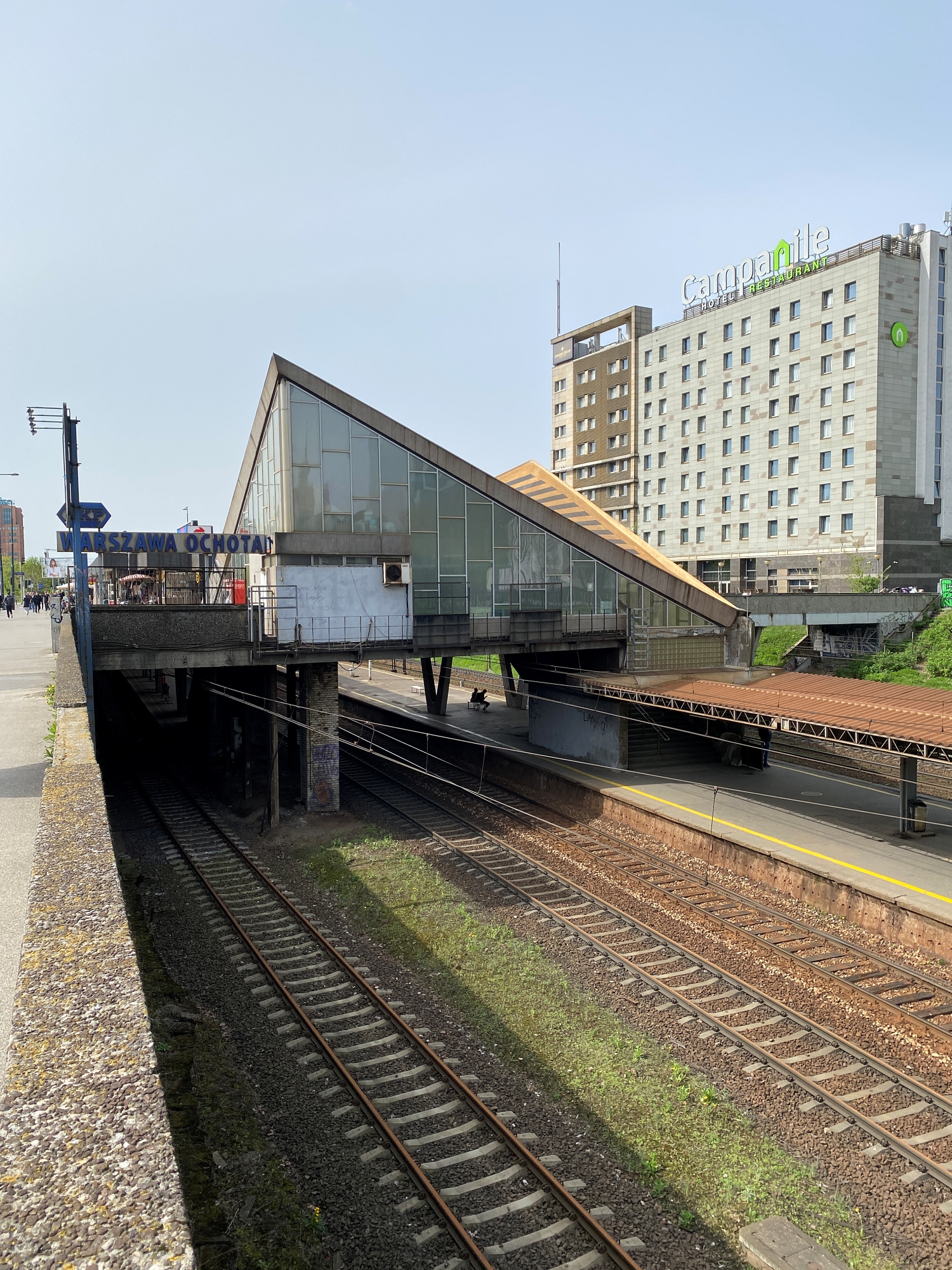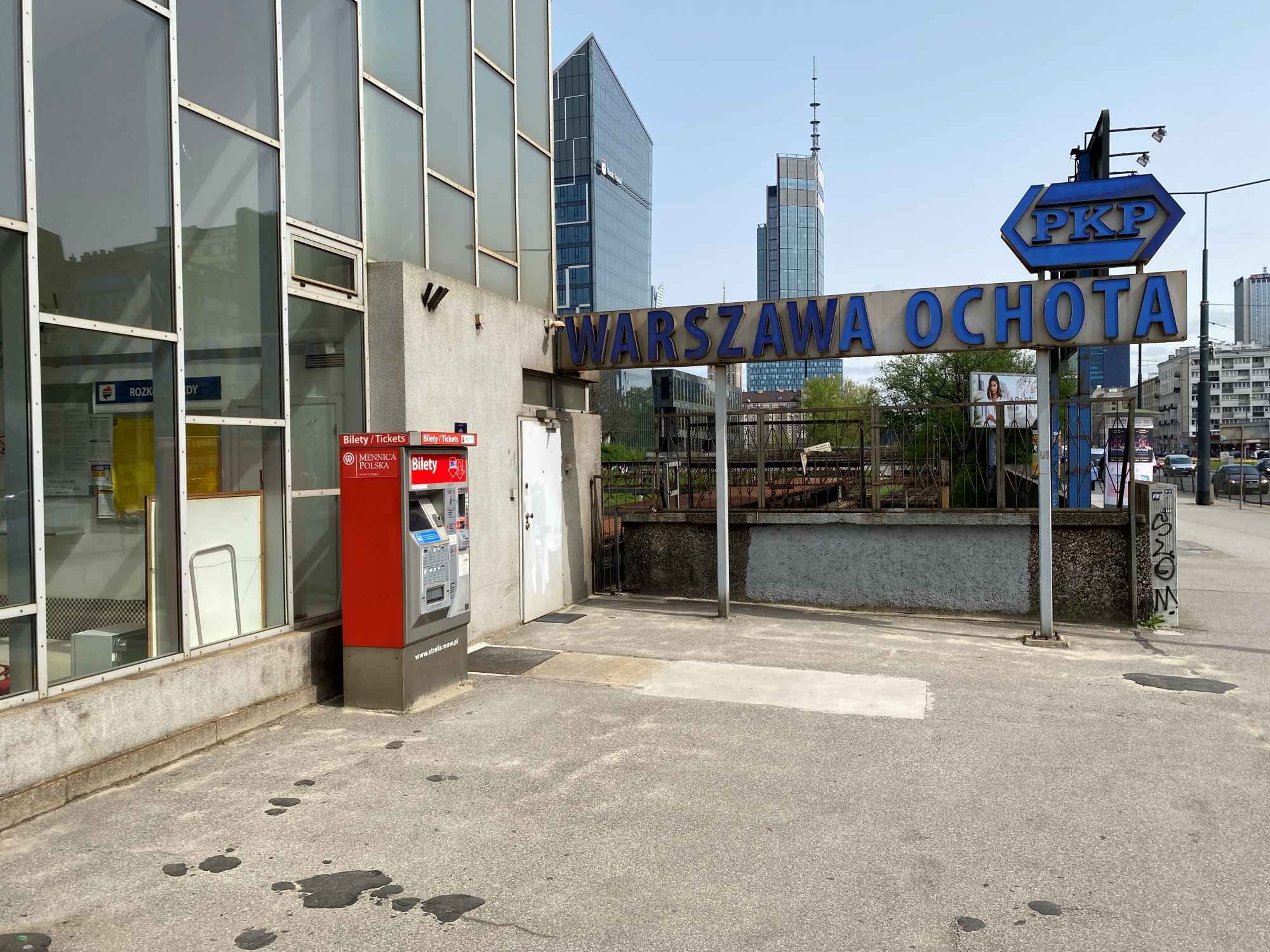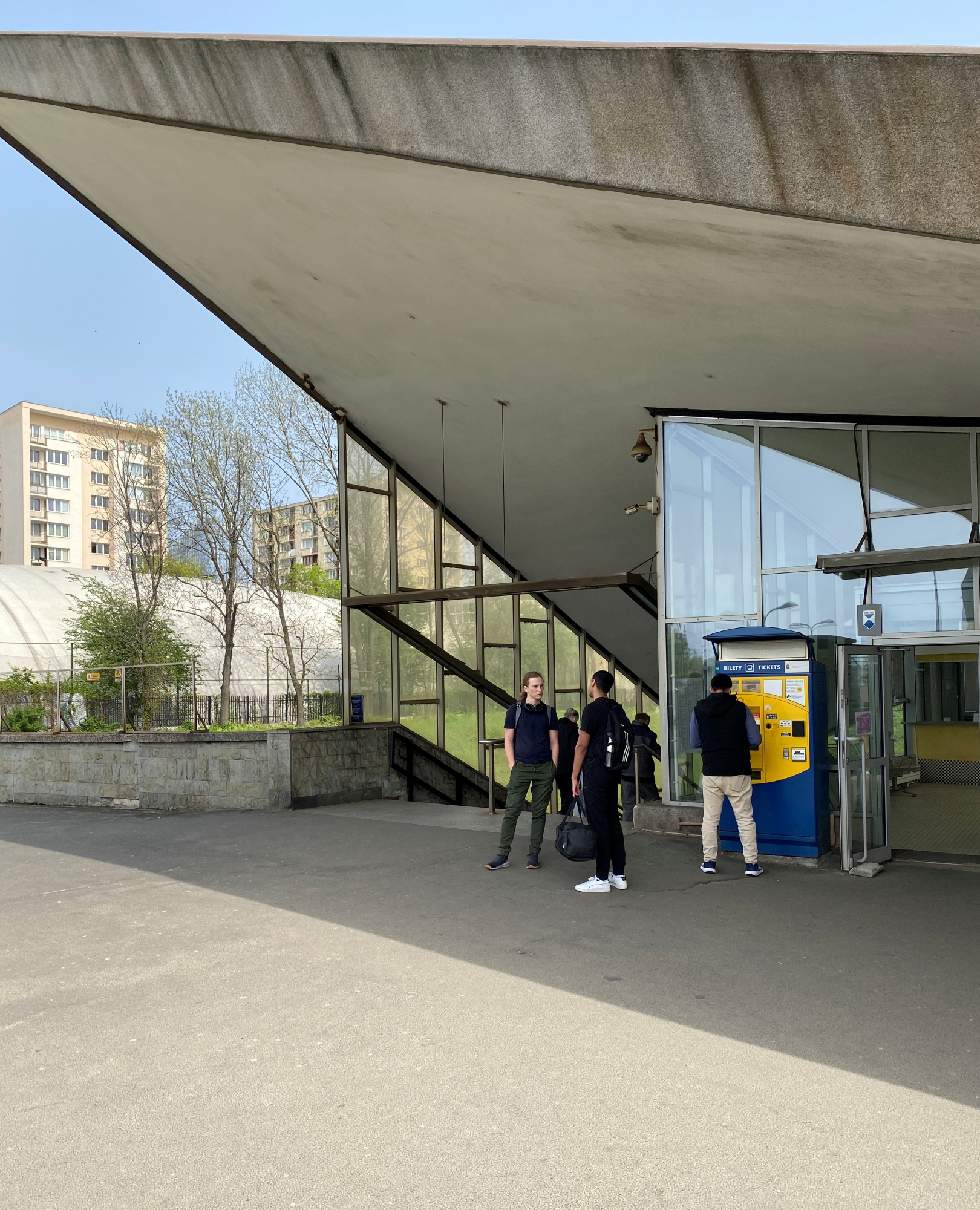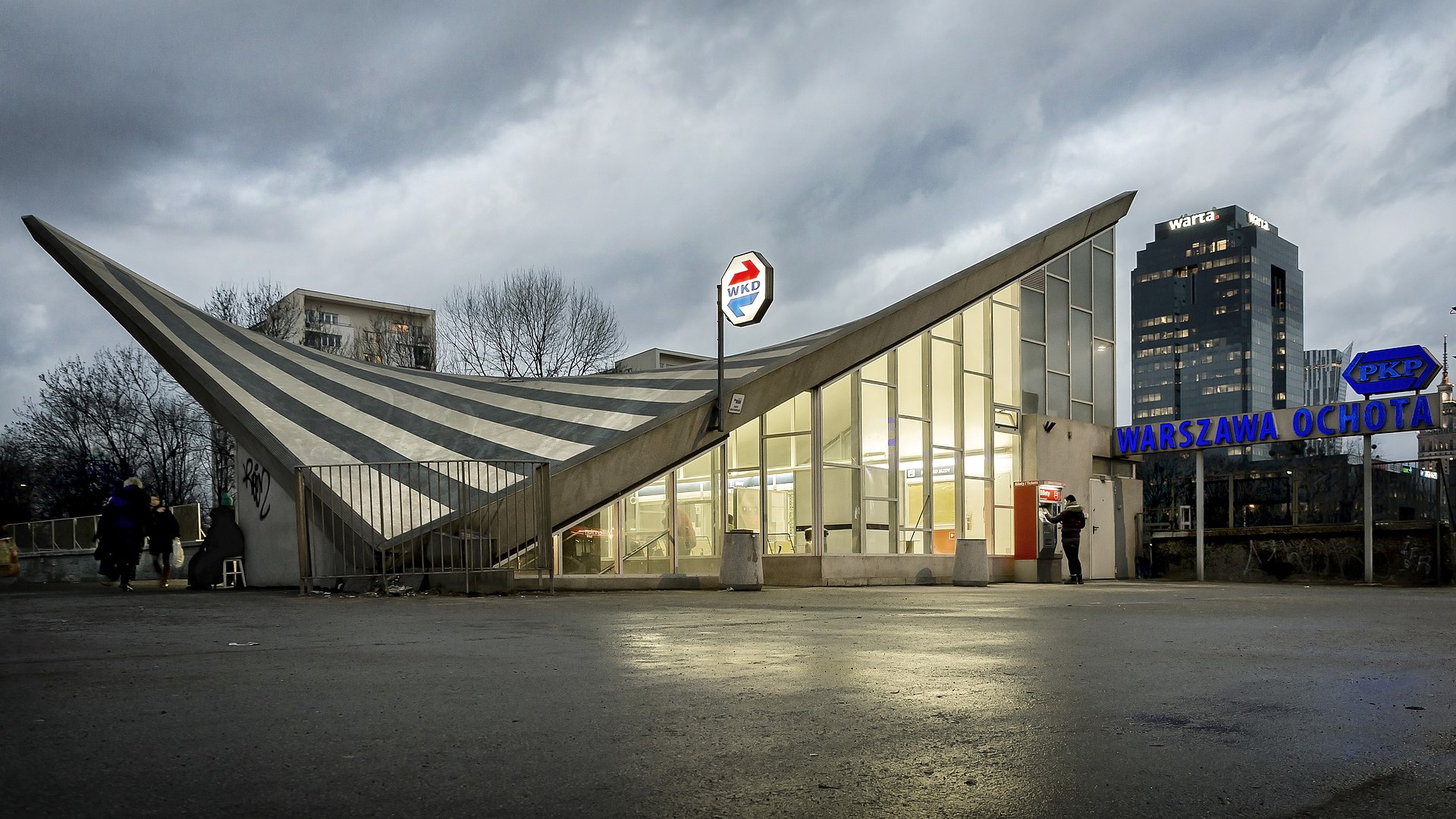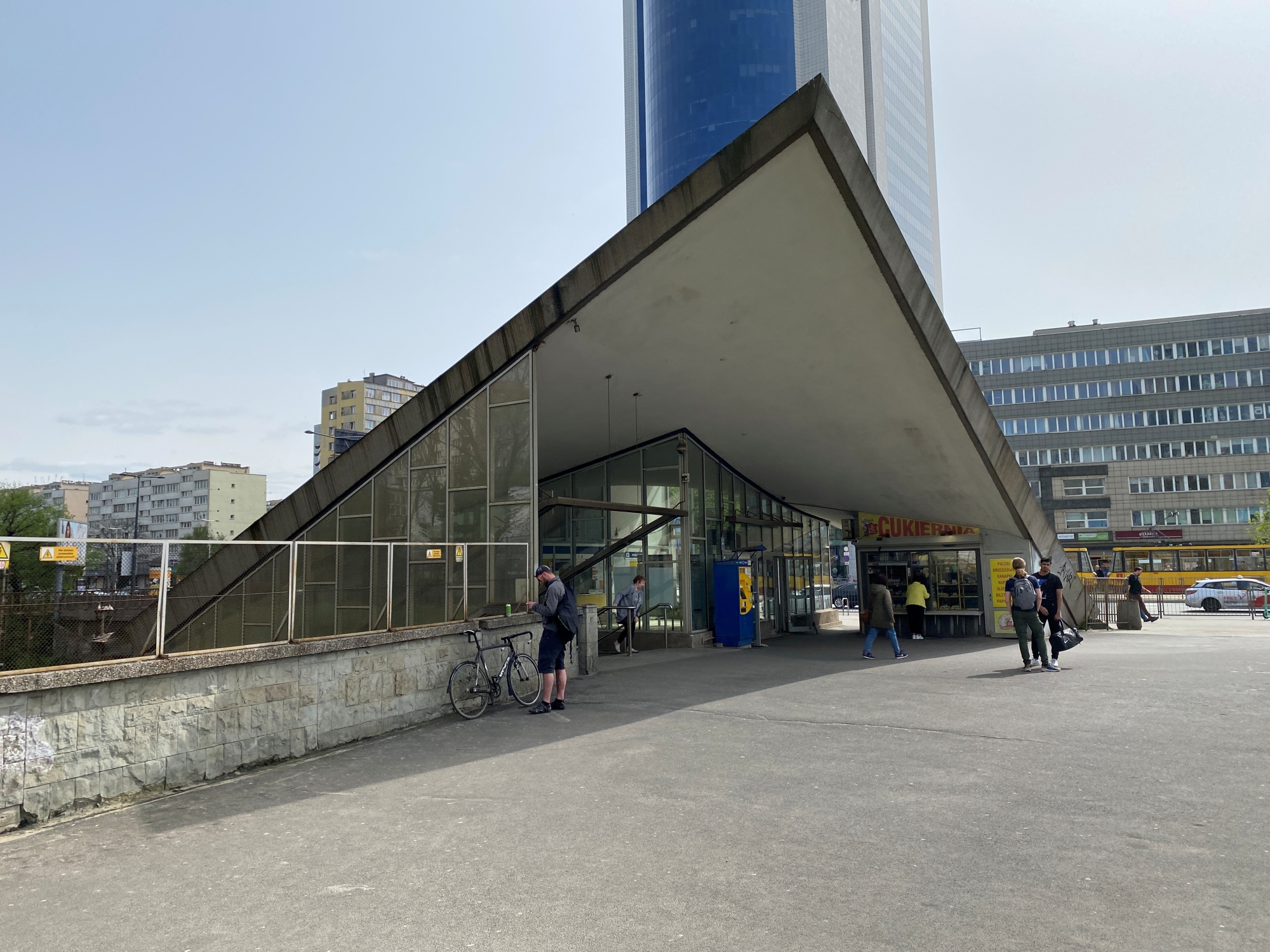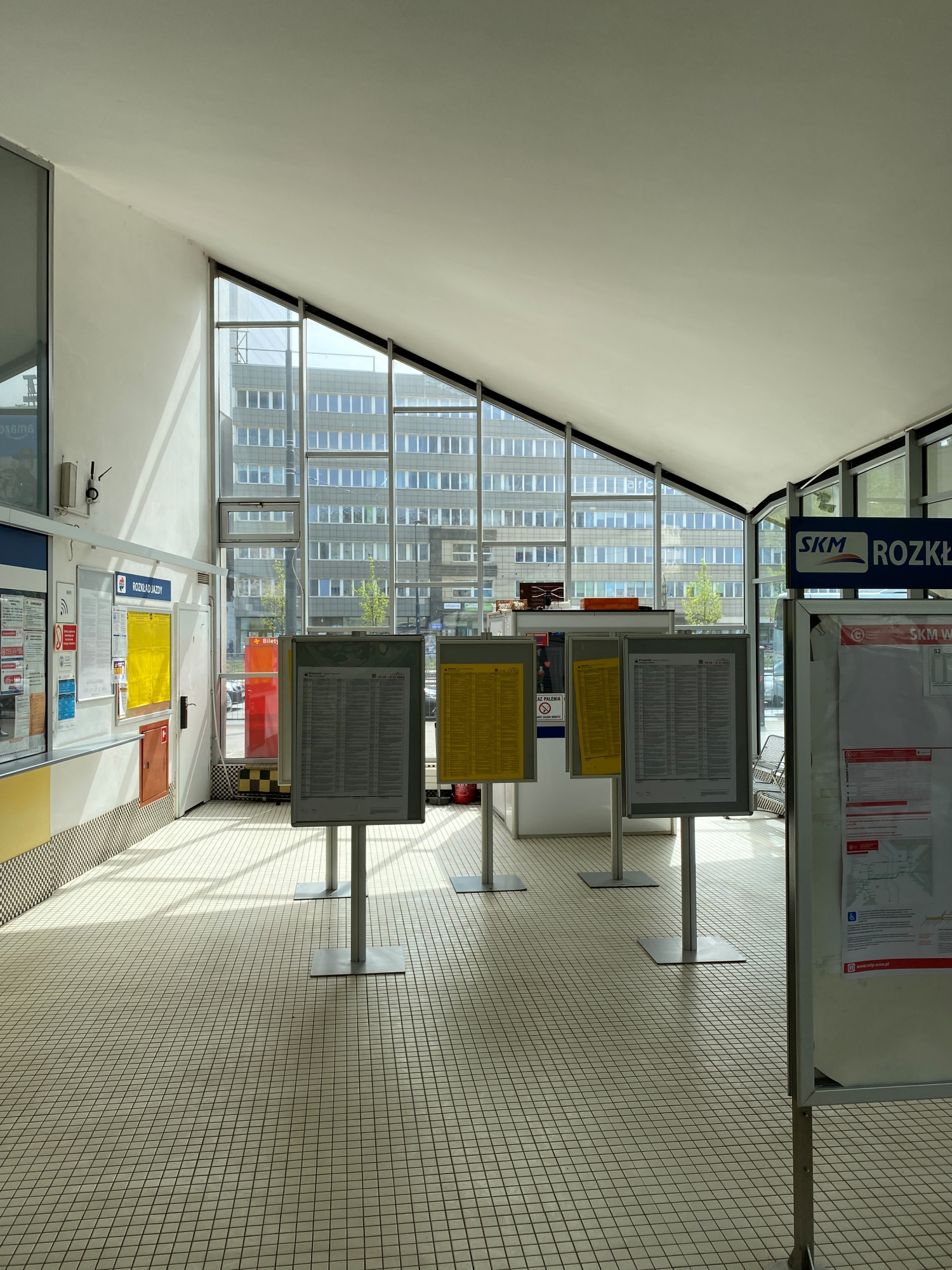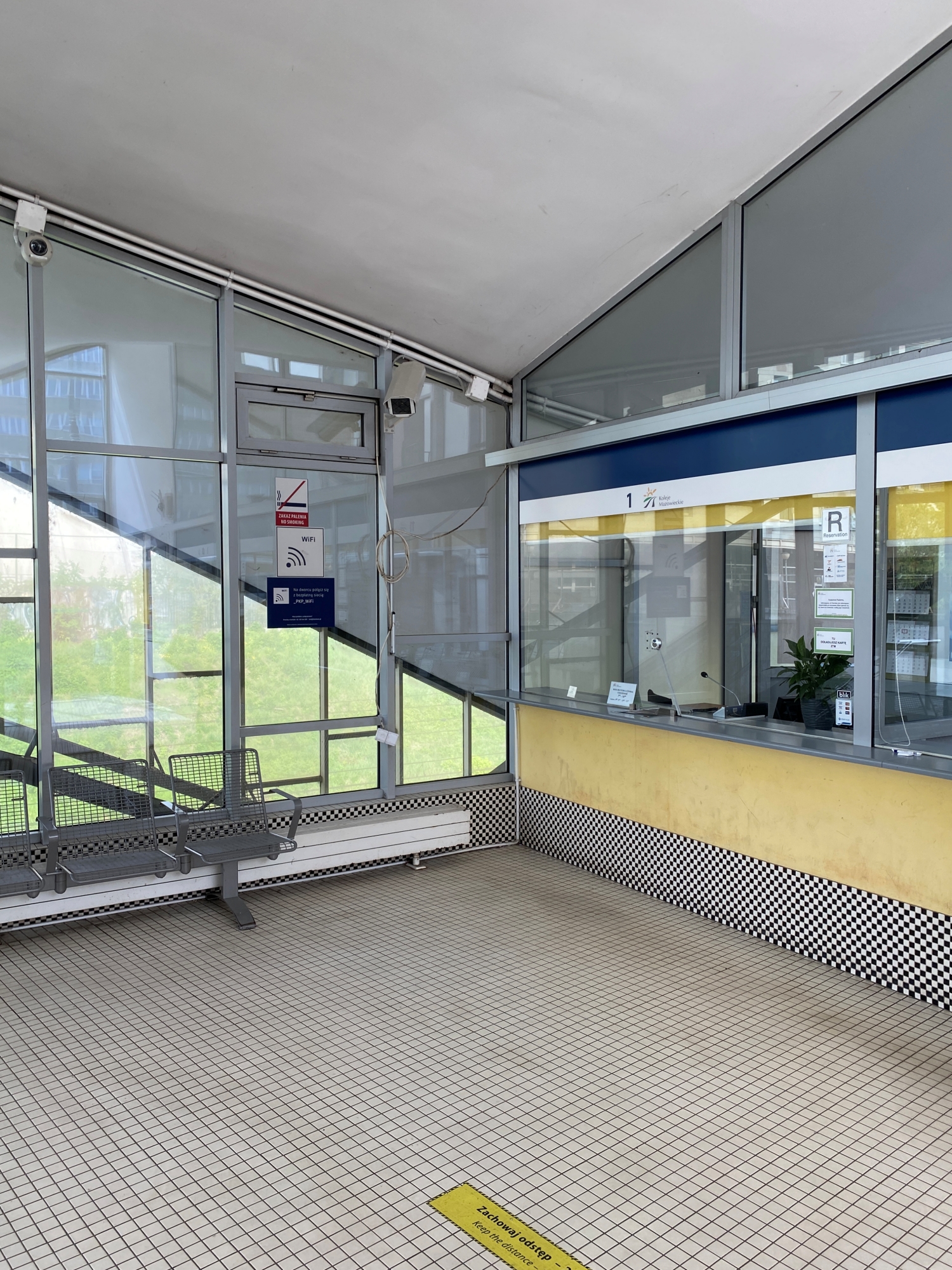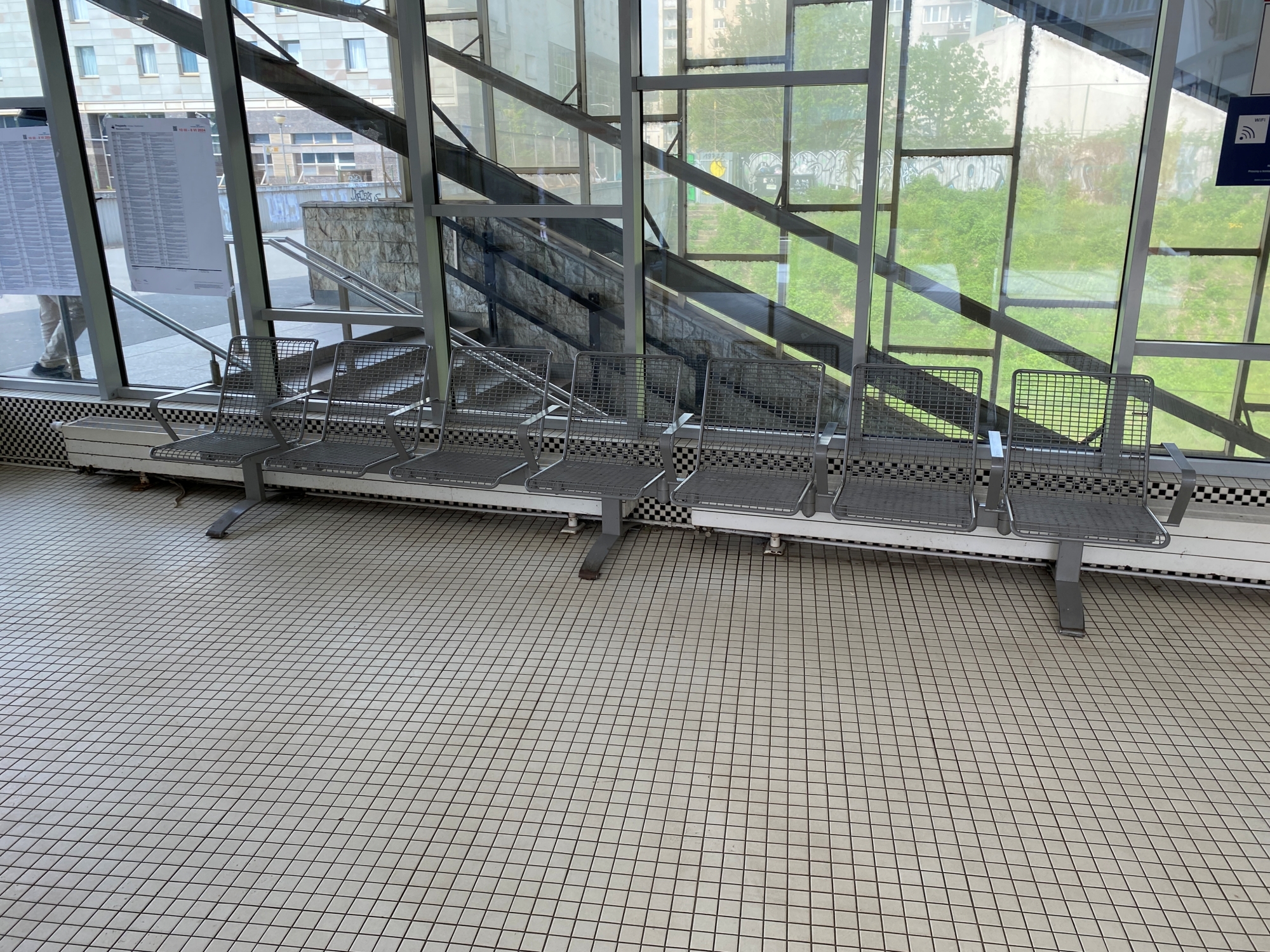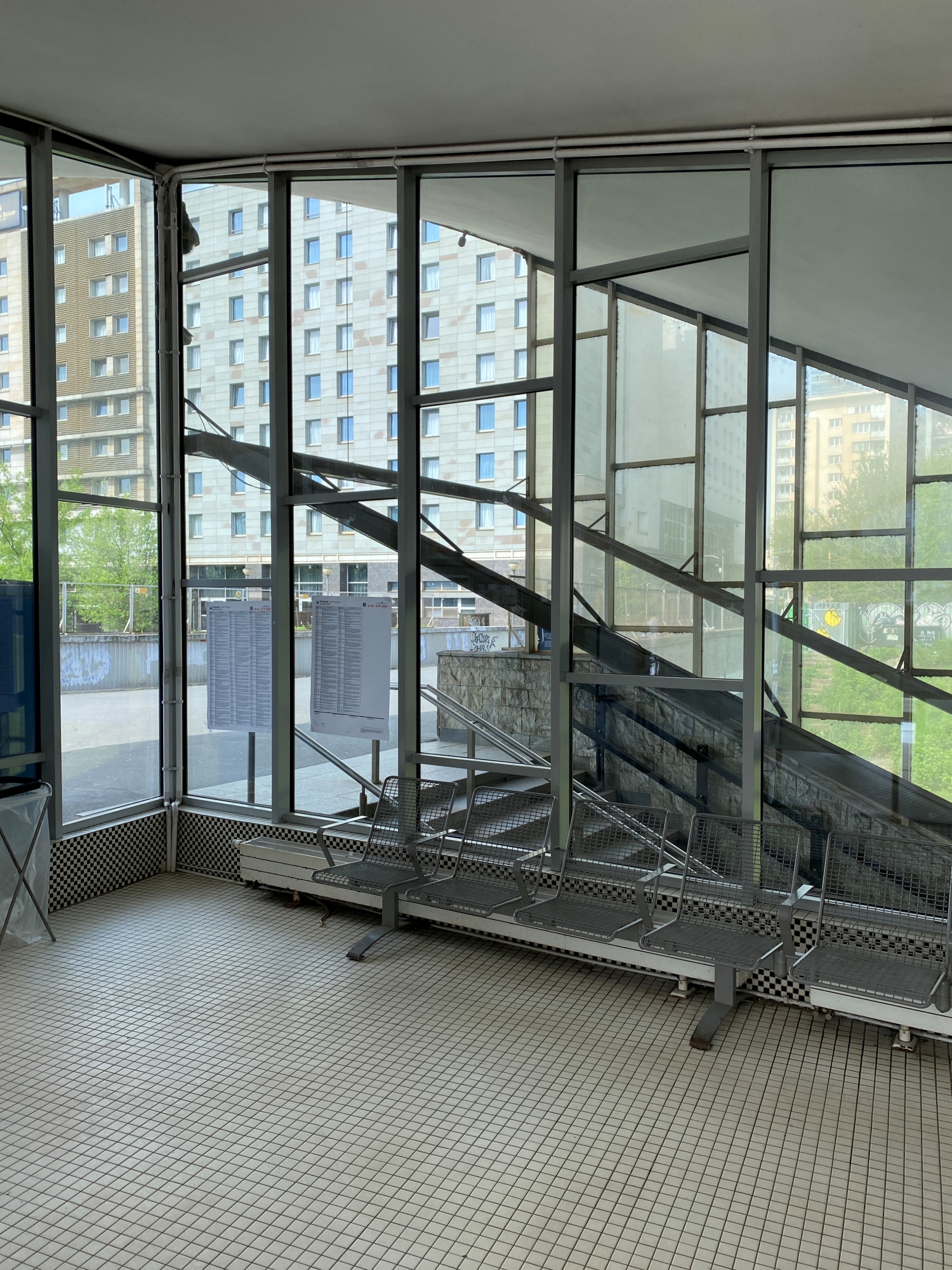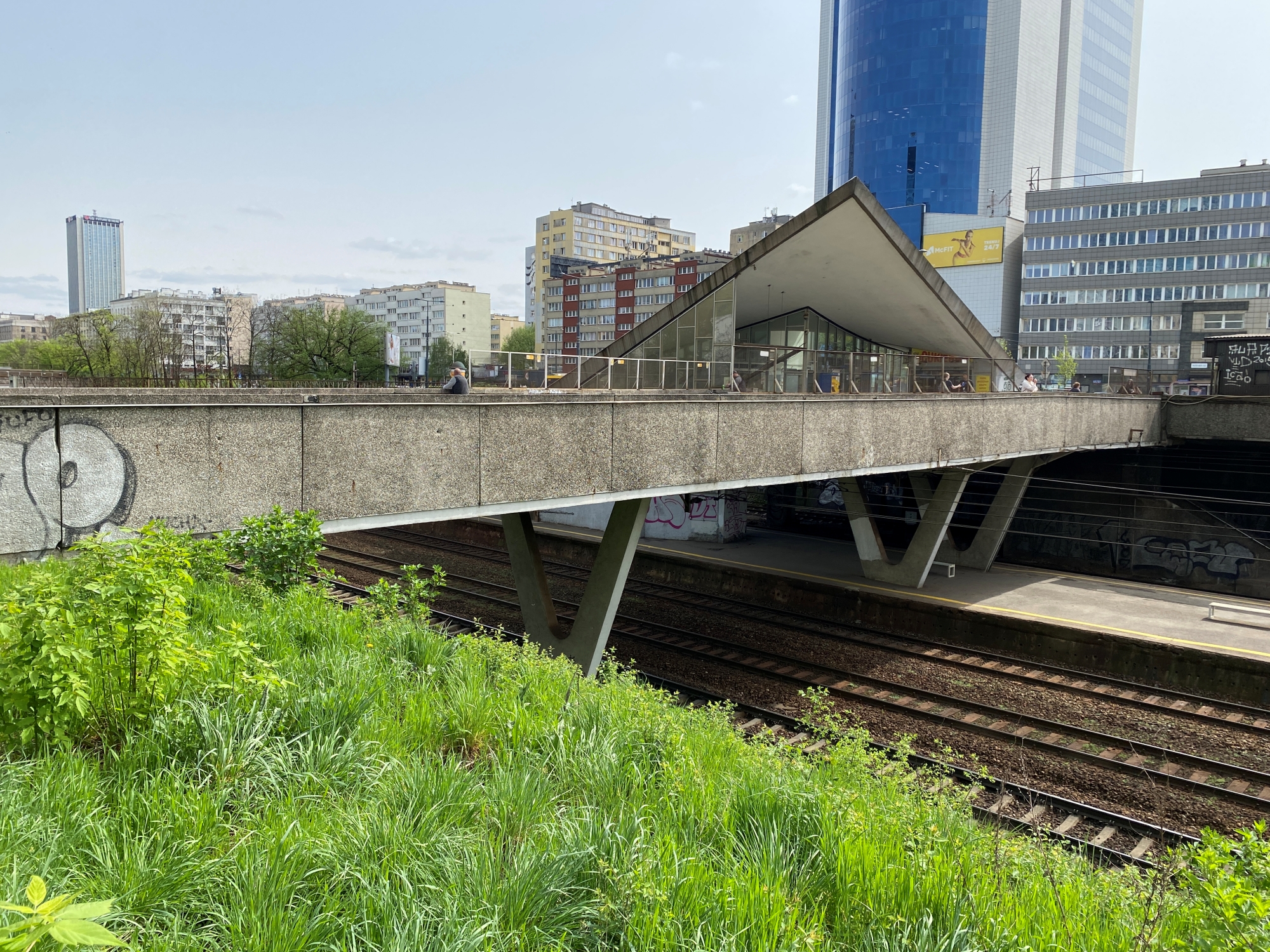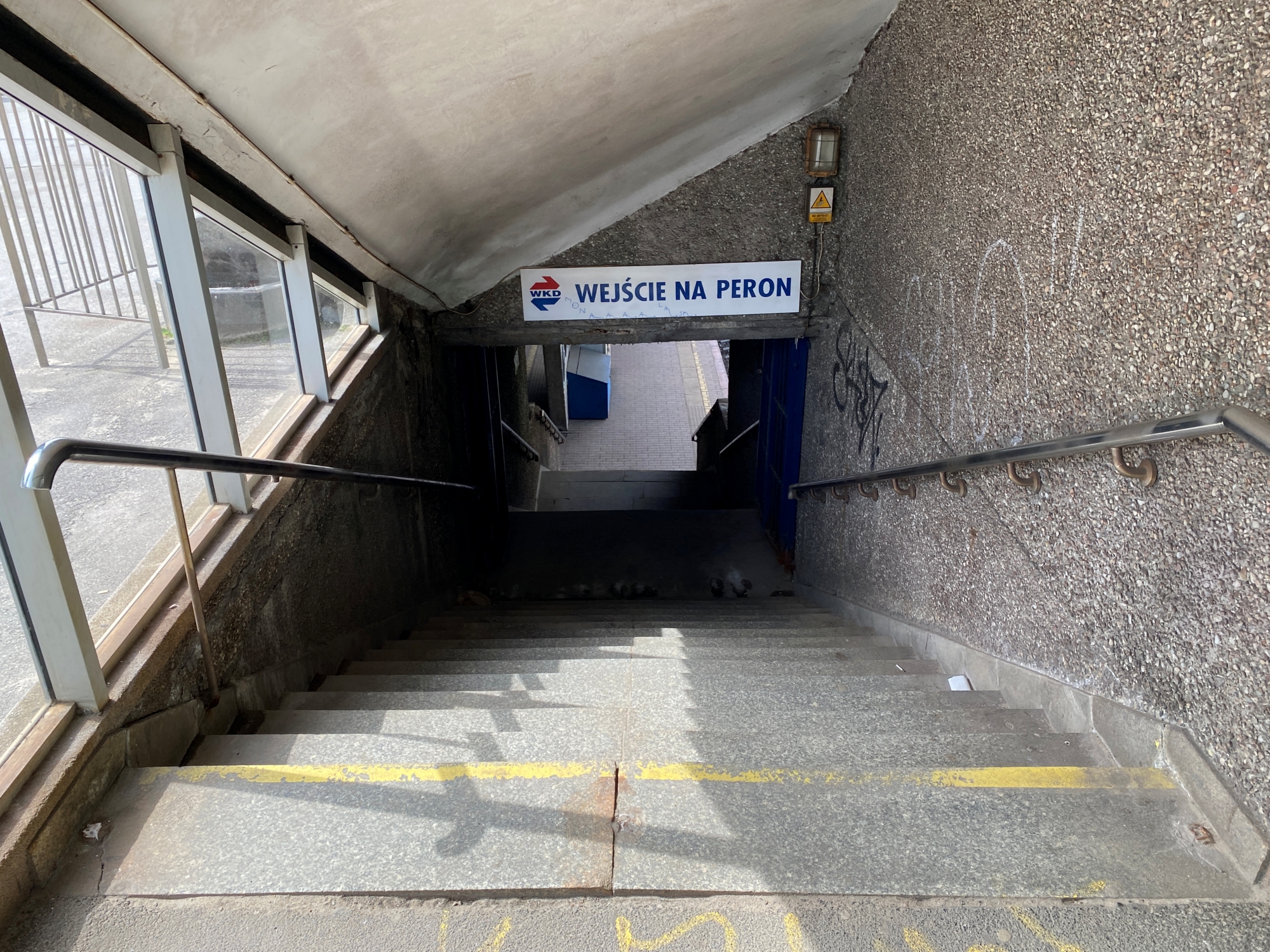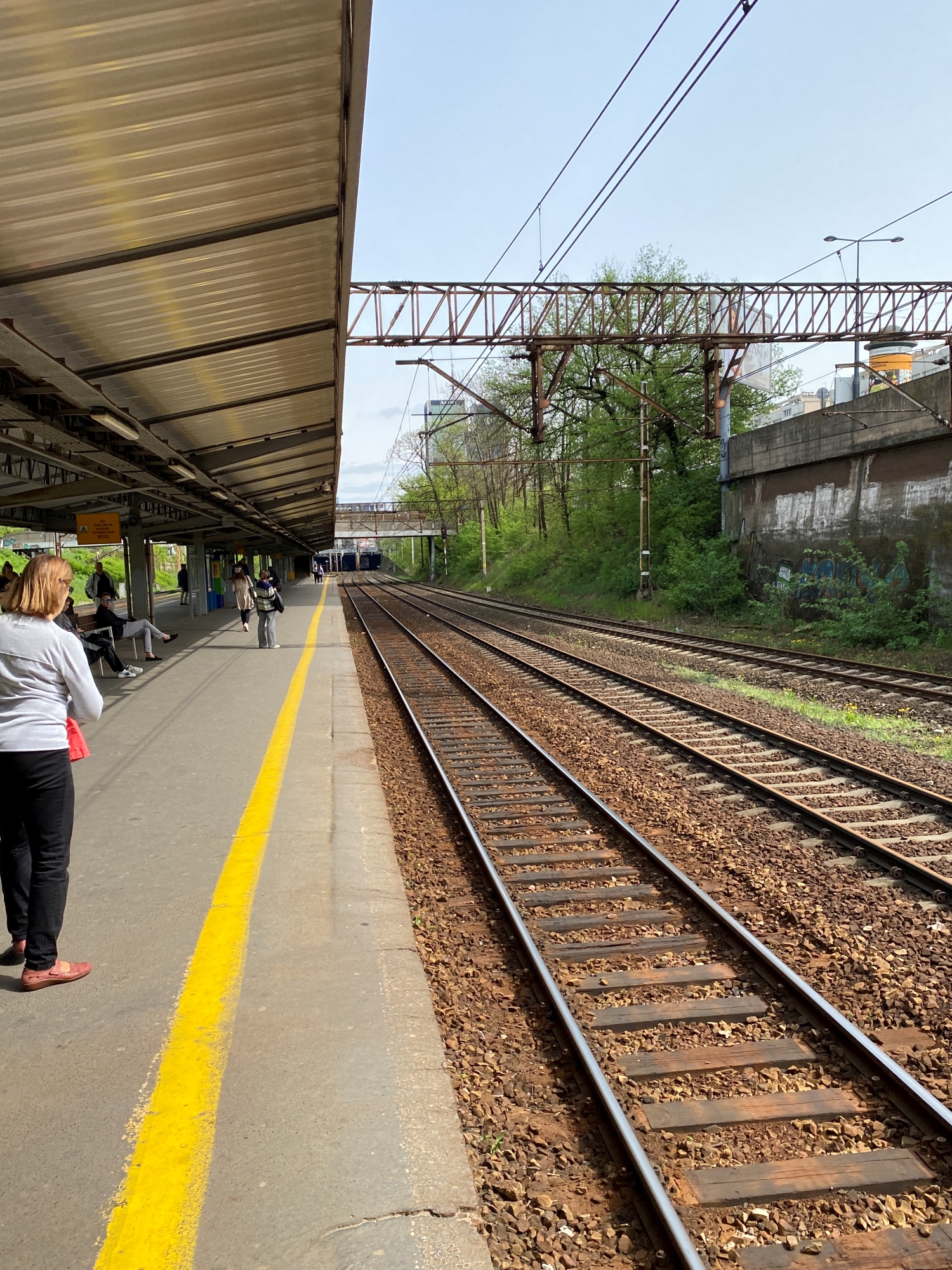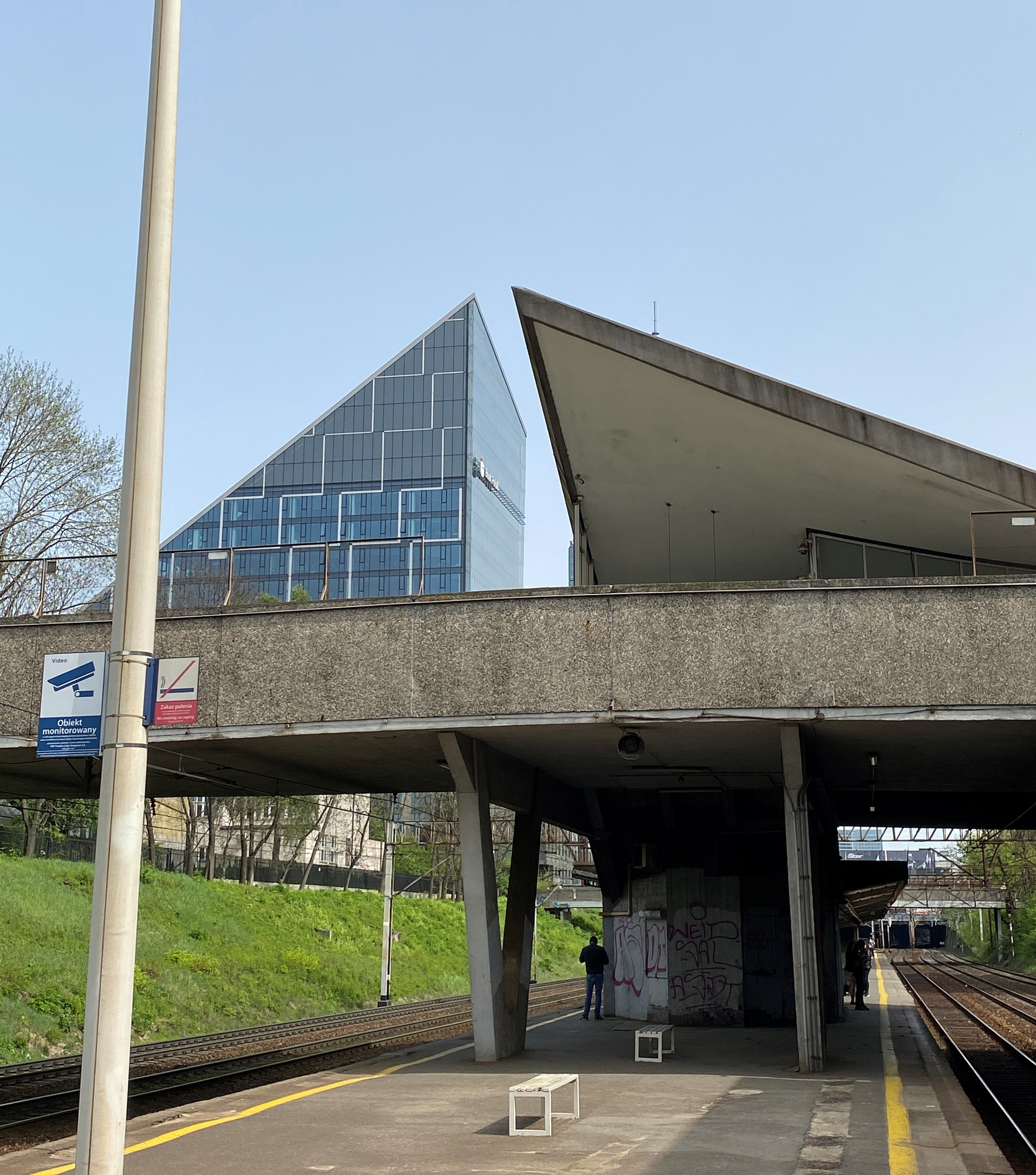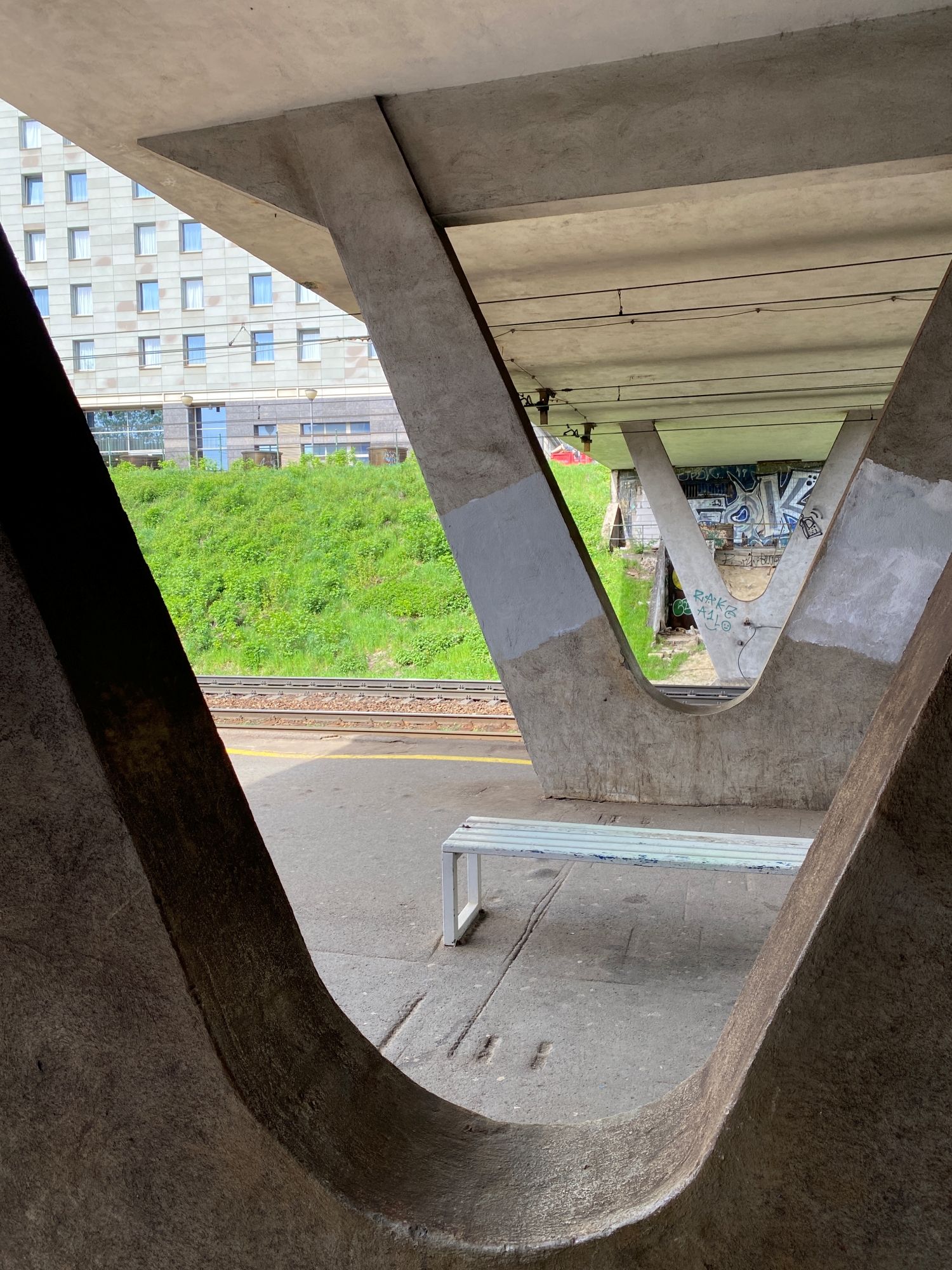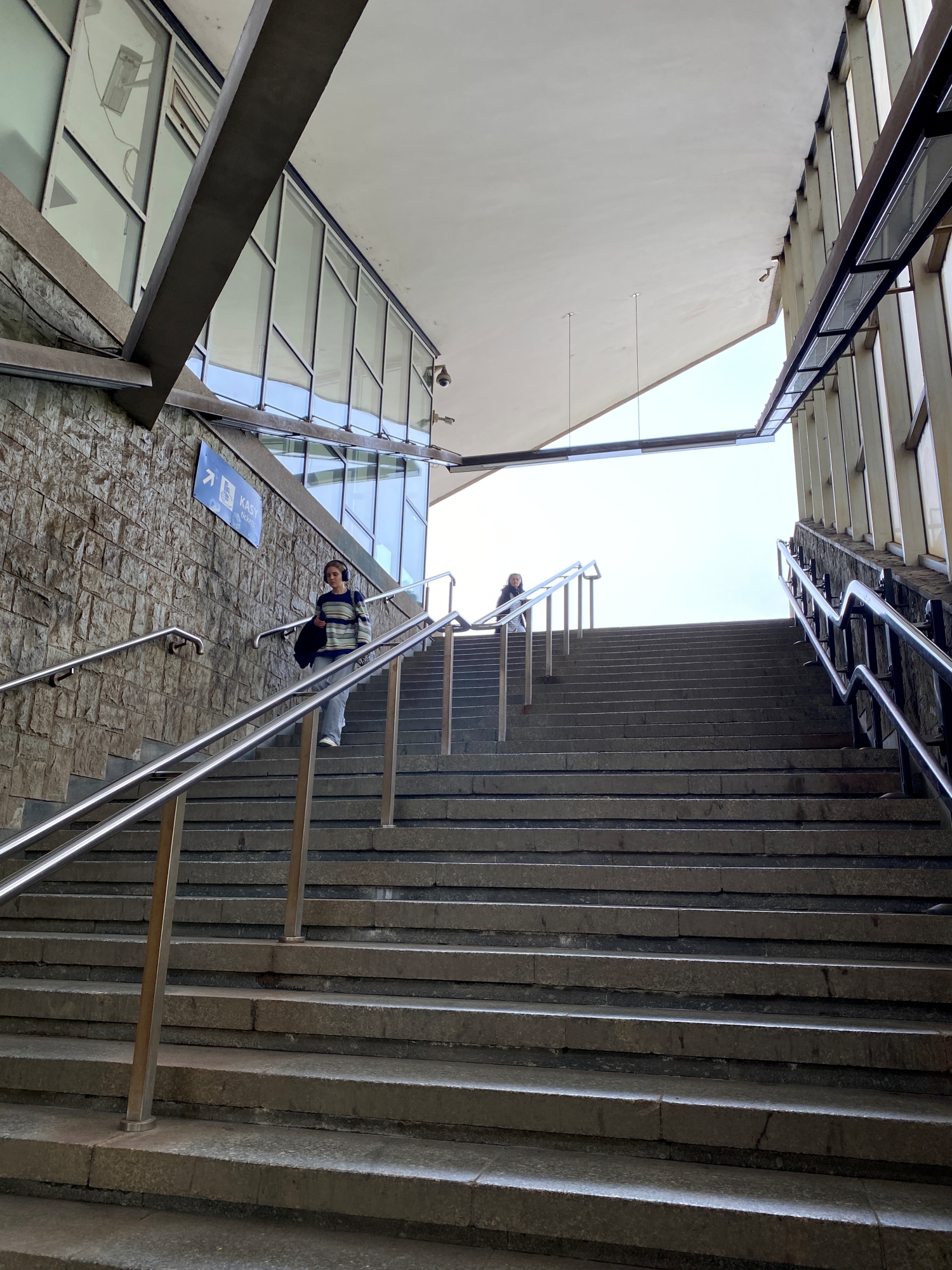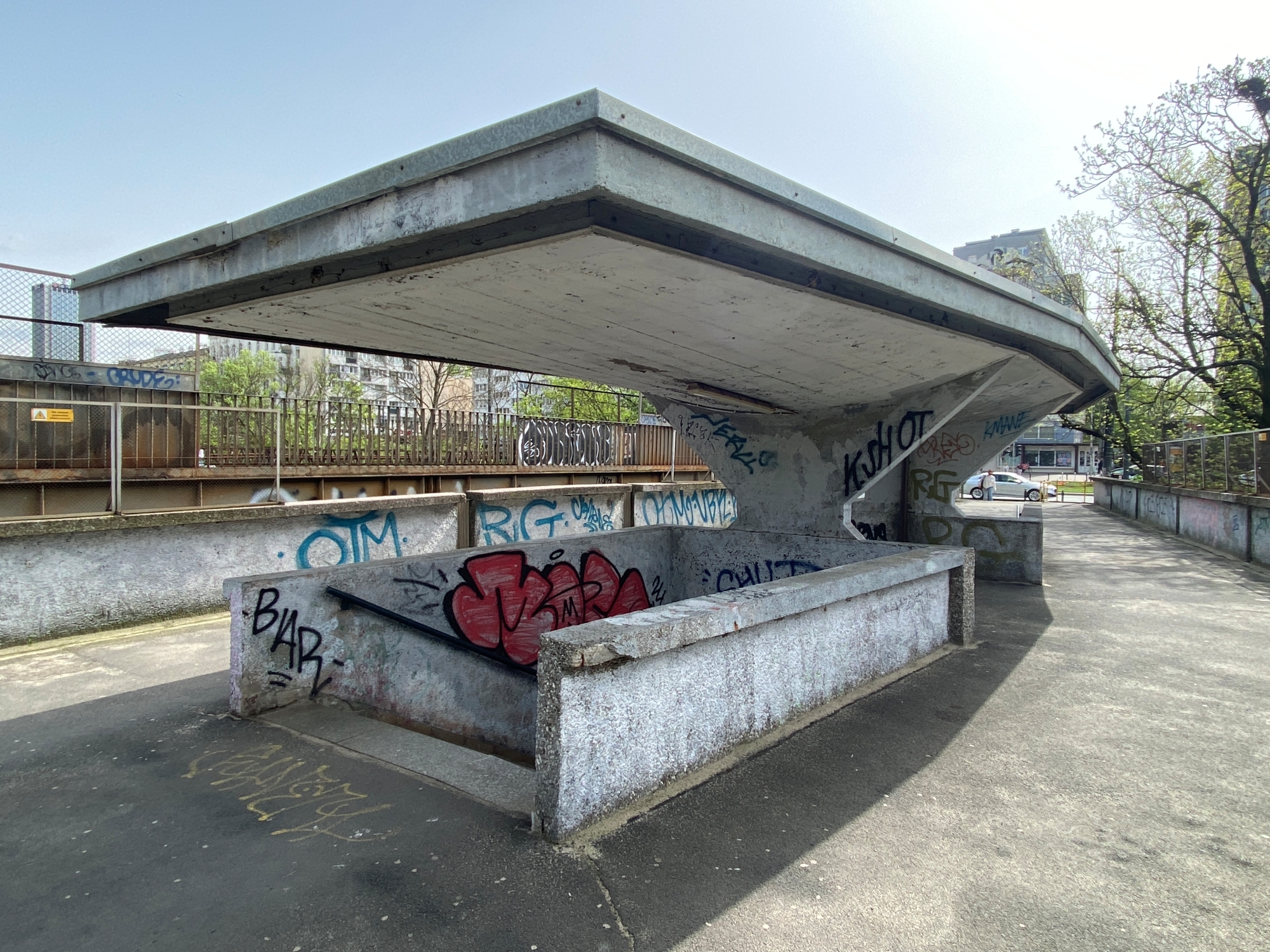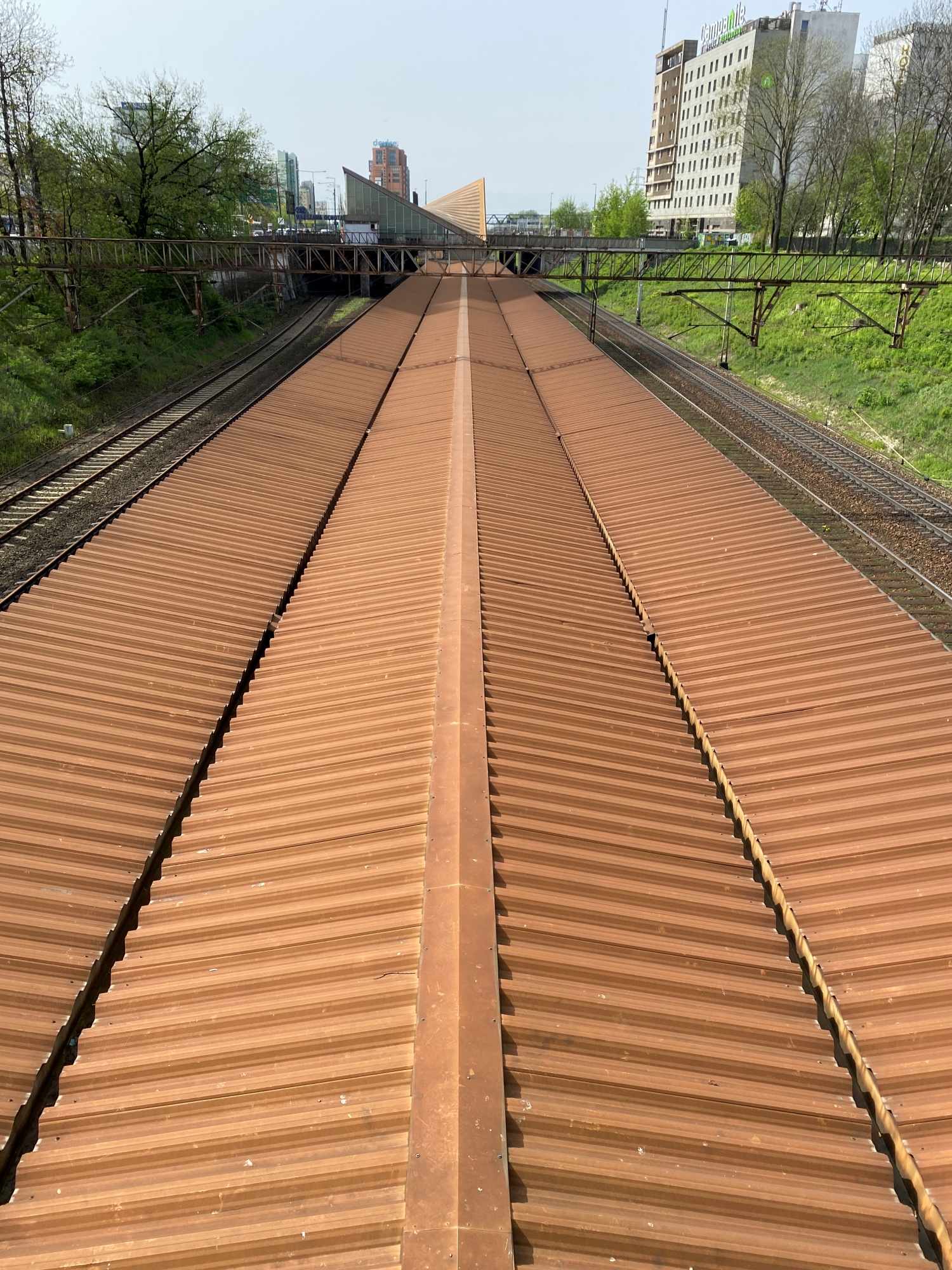Warsaw Ochota railway station is one of the railway stations built in the 1960s on the cross-city line. Like other buildings of this type, the building was characterised by original roof construction solutions – in this case, the glazed pavilion with ticket offices, the kiosk and the exit to the platforms were covered with a reinforced concrete shell structure in the shape of a hyperbolic paraboloid. The station was included in the municipal register of historical monuments of the city of Warsaw in 2012 and in 2018 in the register of historical monuments.
The station was built between 1954 and 1963 to a design by Arseniusz Romanowicz and Piotr Szymaniak and their team. It was opened on 29 September 1963, and on 8 December of the same year the Warszawa Ochota WKD stop occupying the second platform of the facility became operational. The stop, together with the Powiśle station which was designed, built and launched at the same time (we wrote about it HERE), facilitated the use of railways in Warsaw and partly relieved the burden on public transport. The station pavilion was built in modernist style and was architecturally distinctive from the start. It was designed by Wacław Zalewski. The plan of the building was based on a square with a side of 17.25 m. Its 8 cm thick slate roof was made of reinforced concrete and covered with a mosaic consisting of tiles arranged in black and white stripes that follow the unusual shape.
1963, Warsaw Ochota railway stop. Source: Album “Warszawa Siemaszki. Photographs from the National Digital Archive”. Source: NAC – National Digital Archive www.nac.gov.pl/
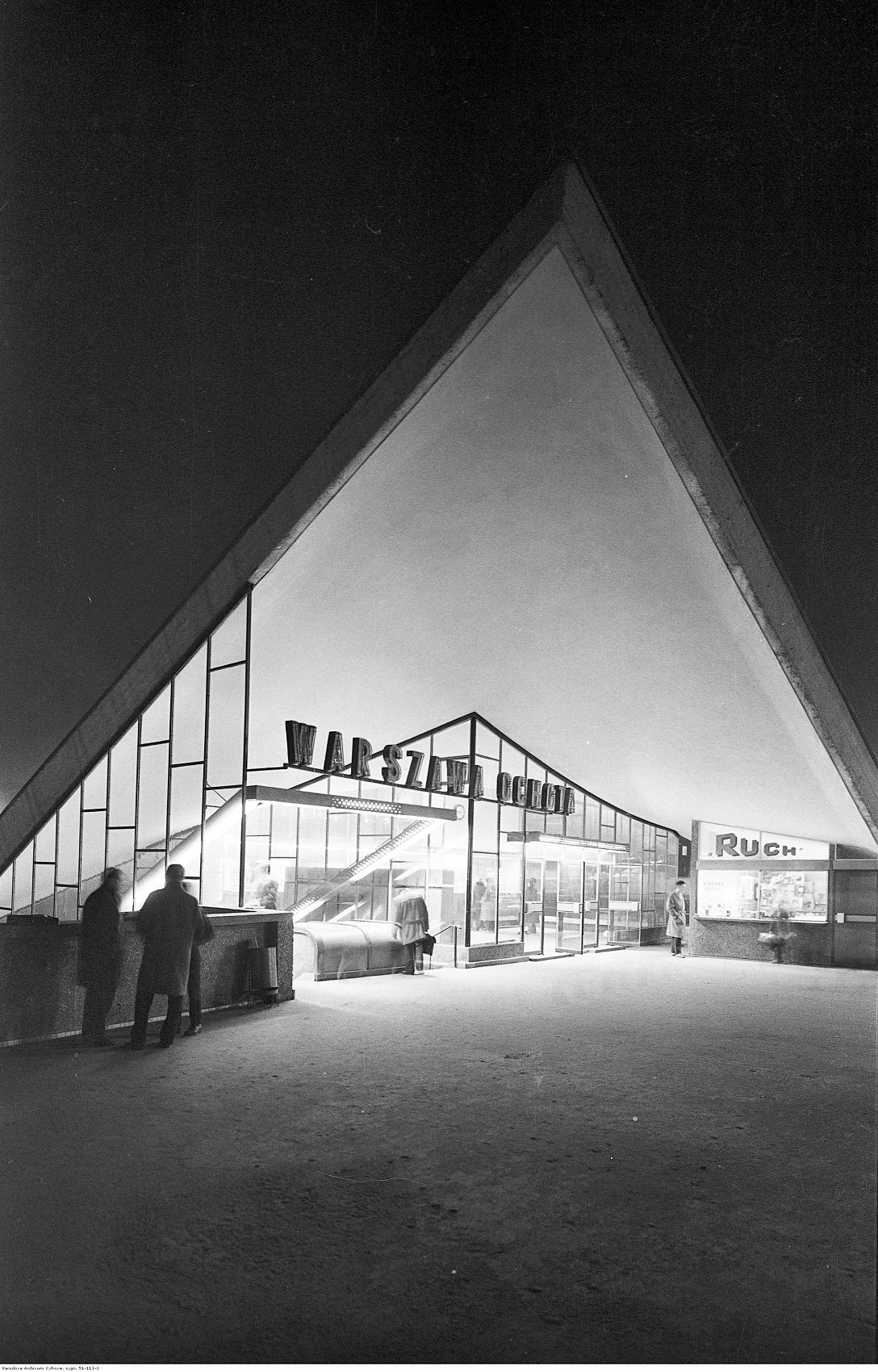
The two diagonal vertices were lowered, while the other two were raised to a height of 8.34 m relative to the level of the base of the structure. The use of a hyperboloid fits in with the functional layout of the pavilion, whose vertices descending to the ground have two flights of stairs leading to the two platforms of the station. Mazovia Railways and Warsaw Commuter Rail have their ticket offices in the station building. Prior to the opening of the station, it was announced that an escalator would be installed at the station as a test of this solution before its planned use at the Central Station. In the end, the stairs leading from the station platform to street level were put into service in early 1965. The construction soon failed and was dismantled in the 1980s.
The stop in the late 1960s and today. Source: Warsaw – on the destruction and rebuilding of the city Alfred Ciborowski Interpress Warsaw 1969 and whiteMAD/Mateusz Markowski
In the course of time, three neon signs also disappeared – two with the inscription Warsaw Ochota placed on the station’s pavilion and a pole standing next to it advertising PKP and WKD. The designers of these neon signs were Bronisław Wycech, Teodor Adamski, Jacek Wyczółkowski, Mieczysław Zasadzień, E. Cholewa and H. Chrabałowska. The supports of the viaducts and floor slabs were made as V-shaped pillars.
February 1974 and April 2024. Source: NAC – National Digital Archive www.nac.gov.pl/ and whiteMAD/Mateusz Markowski
In 2007, a tender was issued for the refurbishment of the station. Initially it was to be a renovation only, but eventually a reconstruction was realised to restore the original appearance of the building with new materials. The main designer of the modernisation was Henryk Łaguna of the Maas studio, while the renovation was carried out by Complex Bud. By the beginning of 2009, the finishing materials, sections of the floor, lighting and small infrastructure had been replaced in the station hall and CCTV had been installed. Plaster, thermal insulation, windows and installations were also changed. The external walls of the building were given an anti-graffiti coating, while the roof covering was replaced with a new one with a modified stripe pattern compared to the original. The stairs leading to the platforms were also refurbished at this time. Due to problems with the ownership of the land near the station pavilion, the reconstruction of the pole with the PKP and WKD neon sign was not completed. In 2008, the stairs leading from the platform to Towarowa Street were closed. In the following years, the stairs on the street side were also demolished.
The entrance to the station building in the 1970s and today. Photo: Tygodnik Stolica no. 47 (1302) 19.11.1972 and whiteMAD/Mateusz Markowski
In September 2018. Mazovian Provincial Conservator of Monuments – Jakub Lewicki entered the stop in the register of monuments due to its preserved historical, artistic and scientific values. The entry includes the ticket office pavilion, two platforms with shelters, and passageways in the form of two footbridges over the trackbed and three descents to the platforms with canopies, leading from the level of the aforementioned footbridges and pavilion.
View from the footbridge over the Warsaw Ochota railway station in the 1960s and today. Source: Public Archive of Warsaw, https://www.tubylotustalo.pl/spoleczne-archiwum and whiteMAD/Mateusz Markowski
Prof. Jakub Lewicki wrote in his justification:
“The railway station has preserved its intact structure, including individual architectural and finishing solutions without any transformations that are significant for the expression of the whole. A significant spatial and urbanistic value of the complex is the exposure of the ticket office pavilion located on a footbridge over the excavation, visible in this configuration from both adjacent viaducts, which creates a kind of overhanging effect of the characteristic block over the railway track. The station buildings, including the pavilion, present high values, expressed in technological innovation, the unique expressive form of the pavilion and solutions of high aesthetic value.”
Source: ochota.um.warszawa.pl, warszawa.fandom.com
Also read: Modernism | Warsaw | Architecture in Poland | Railways | Curiosities | whiteMAD on Instagram

